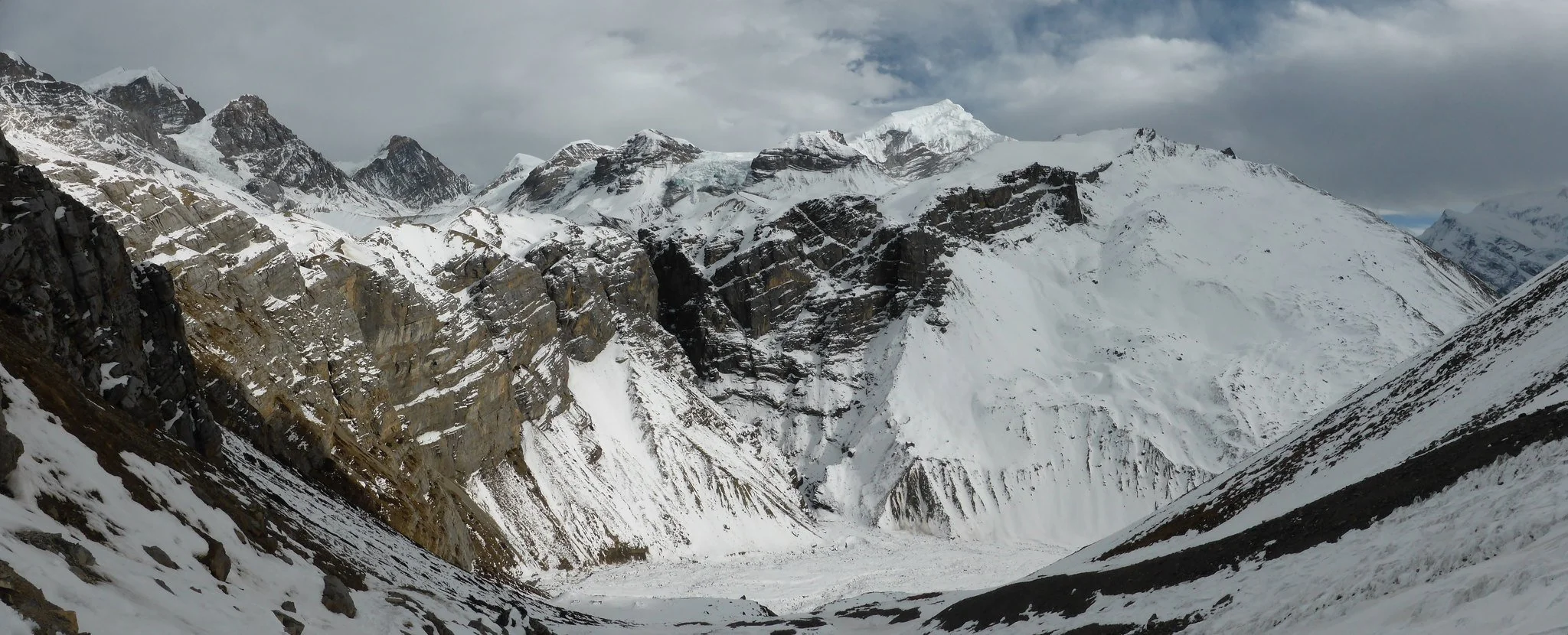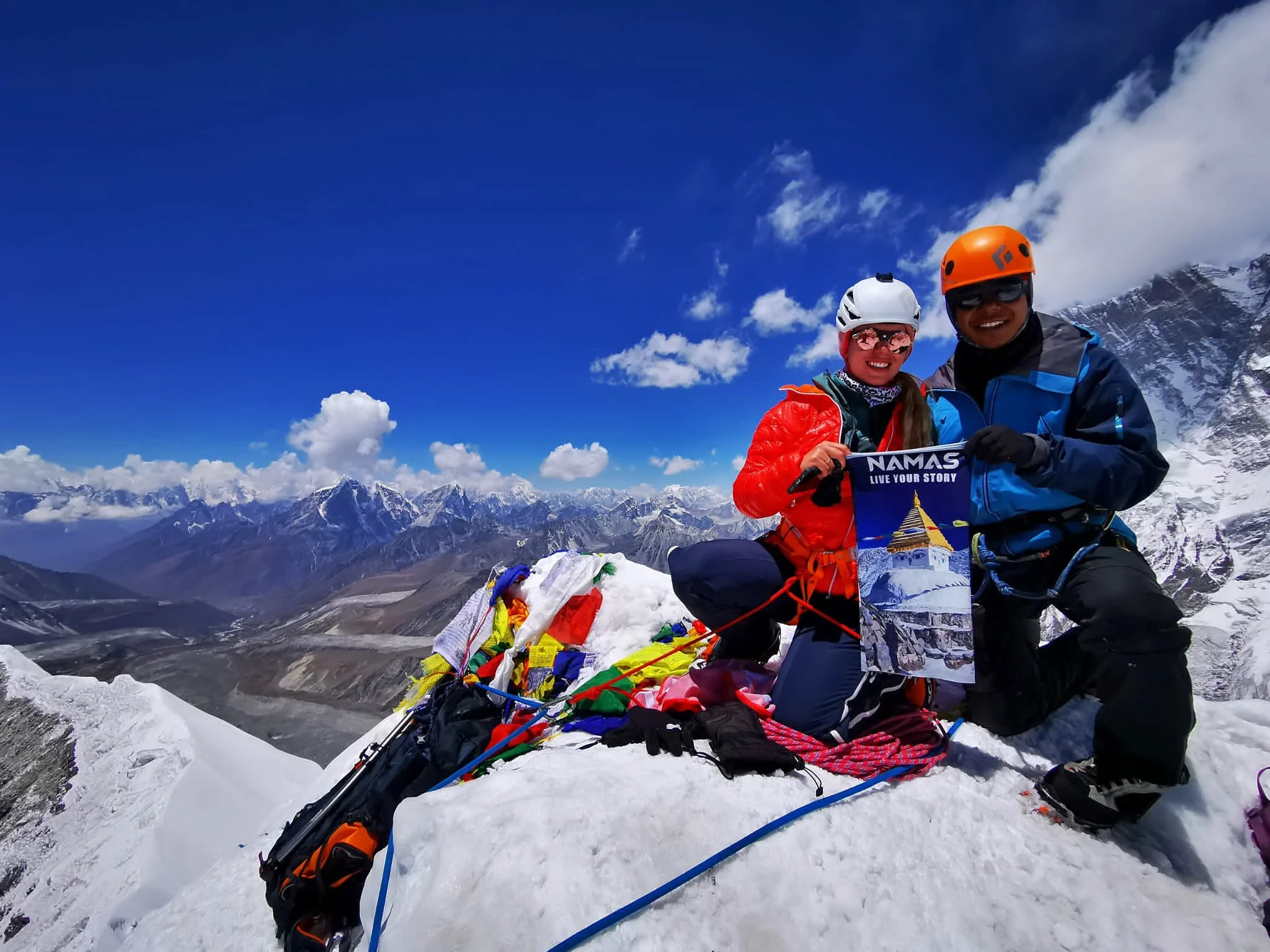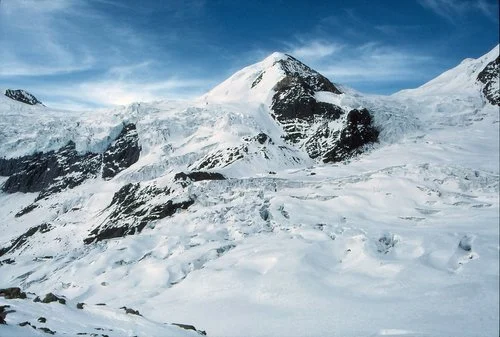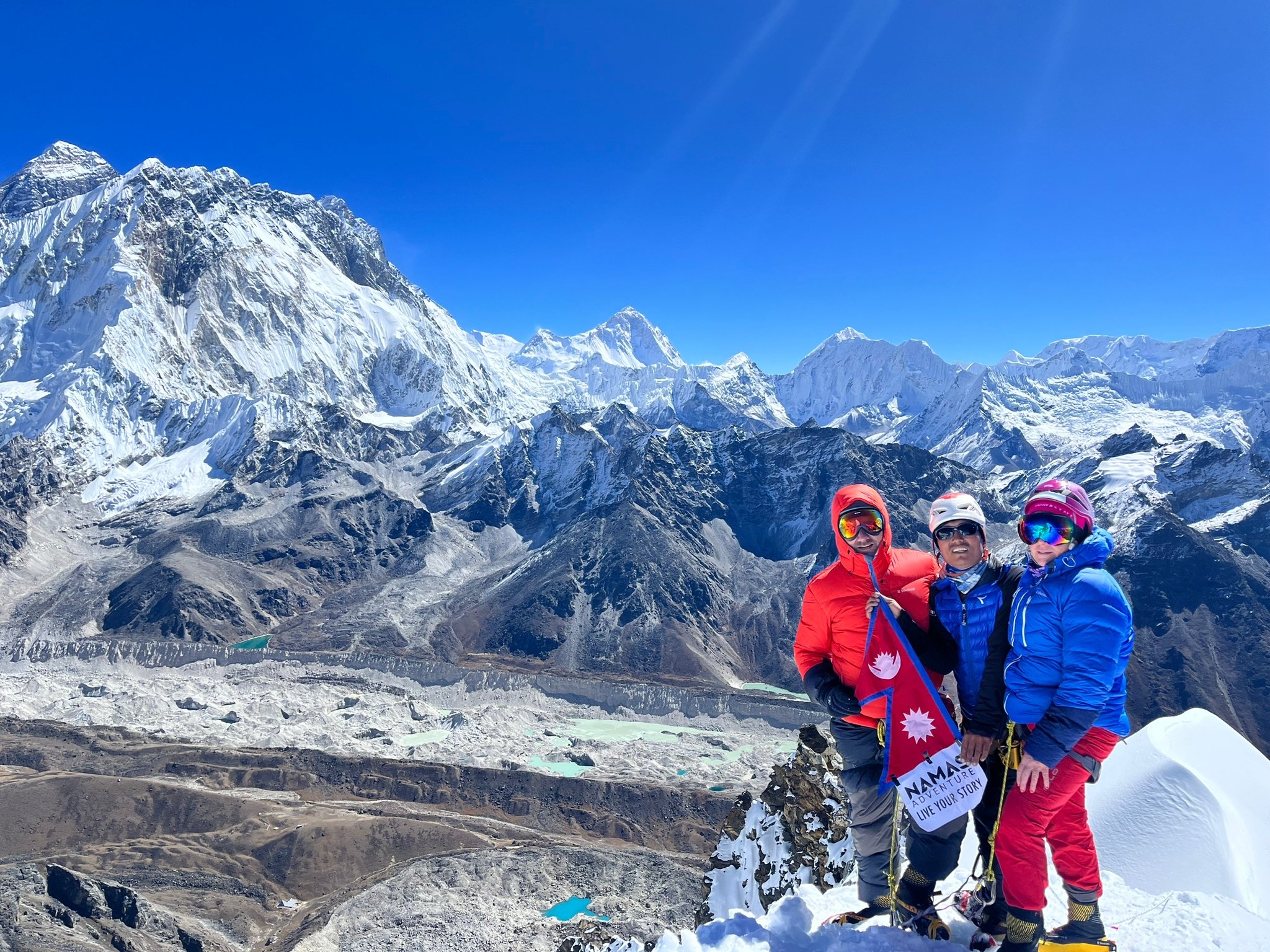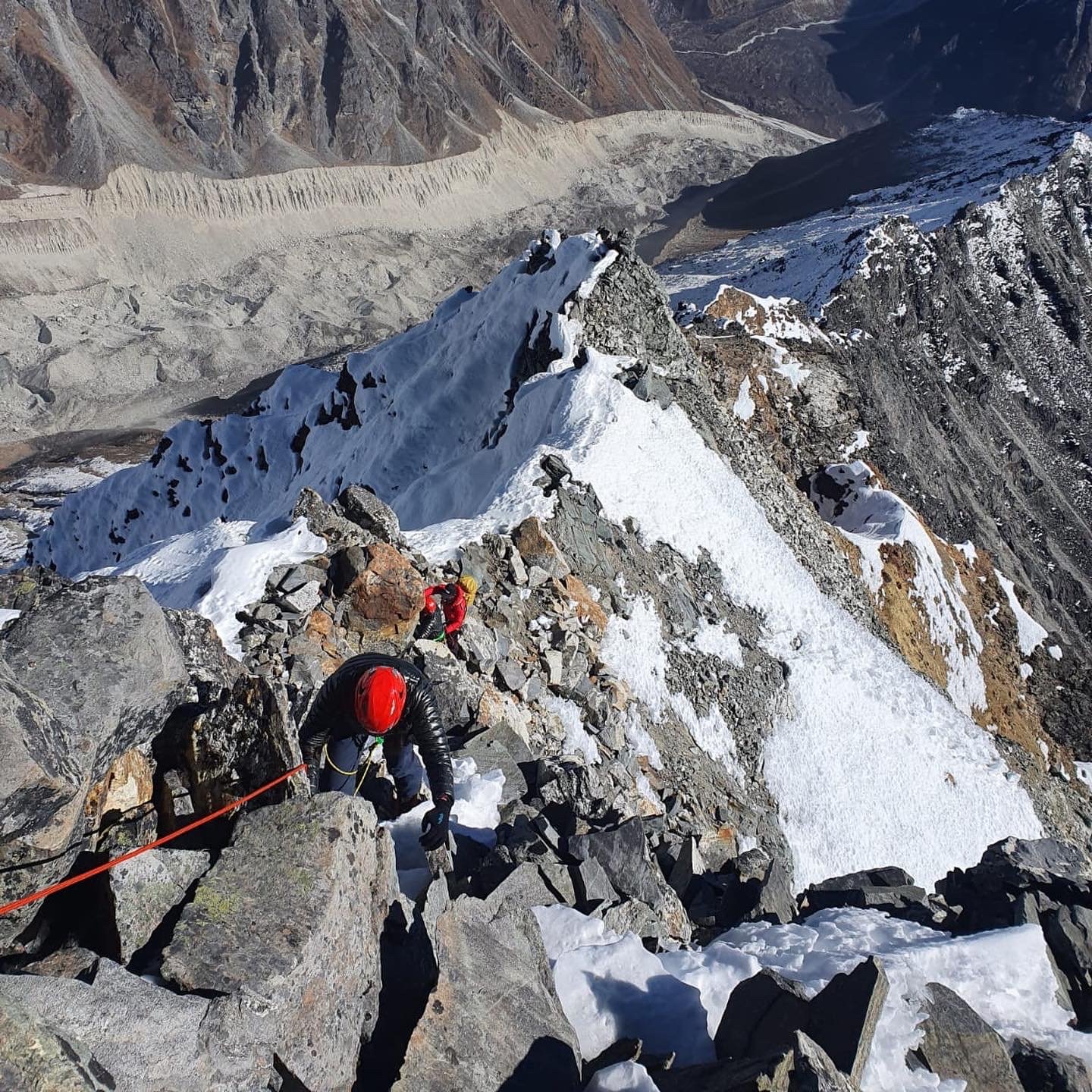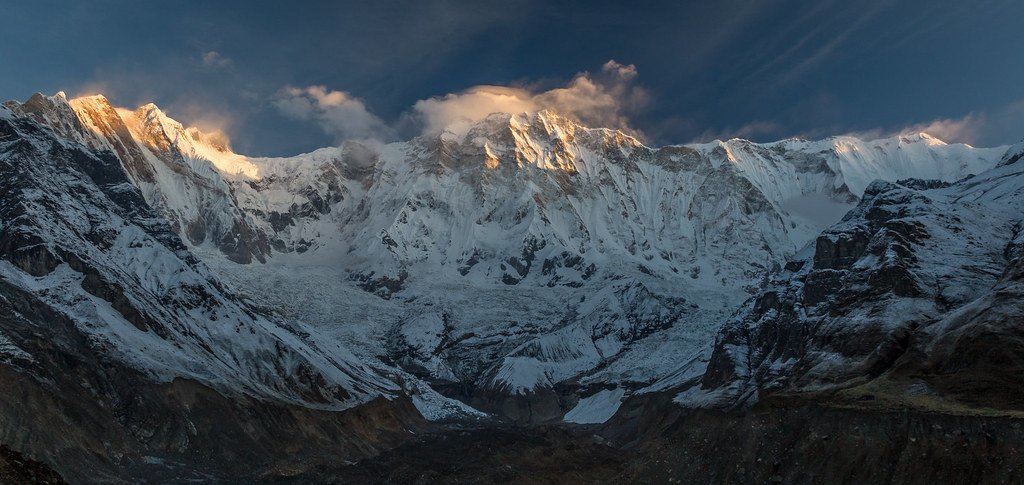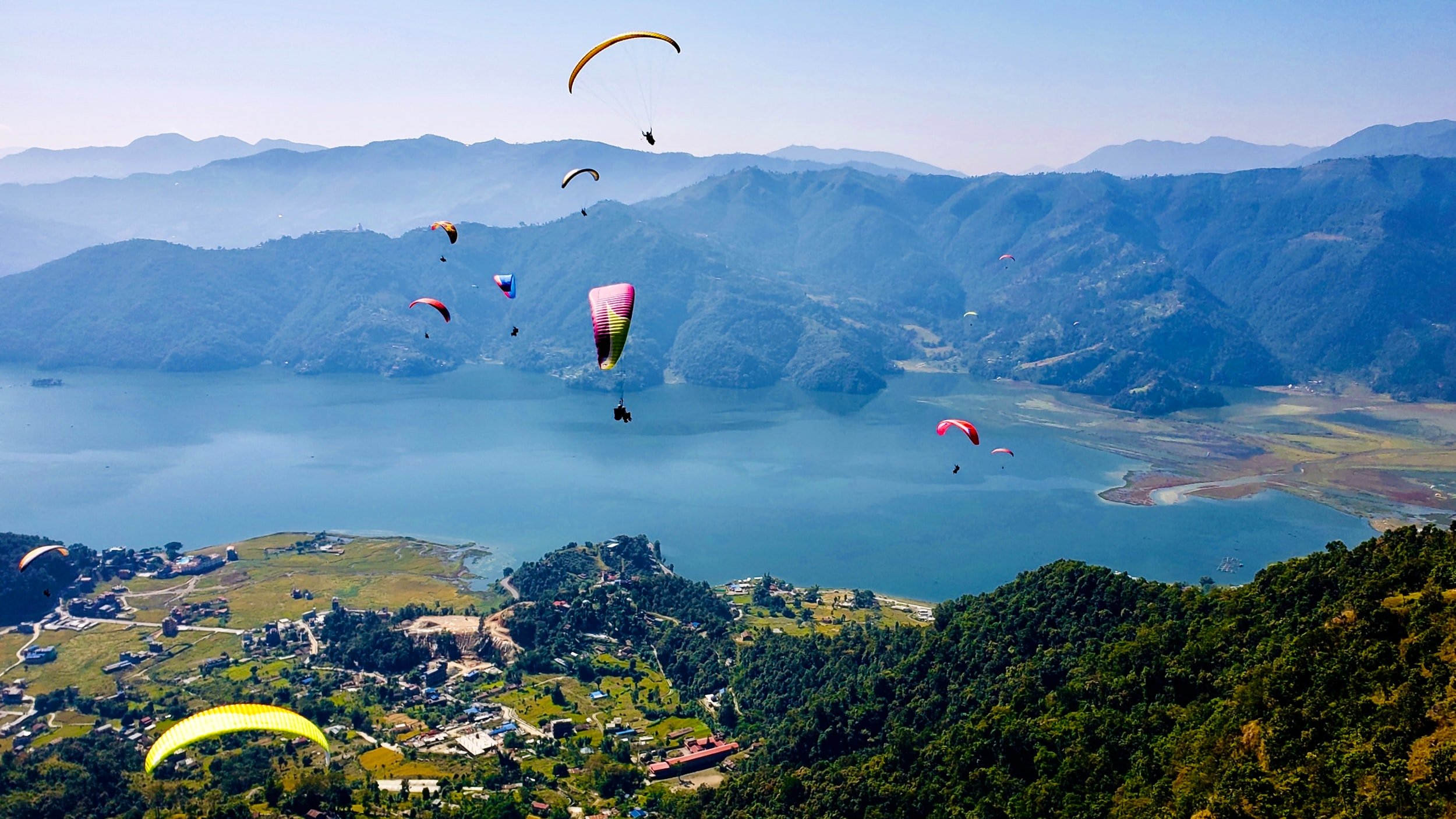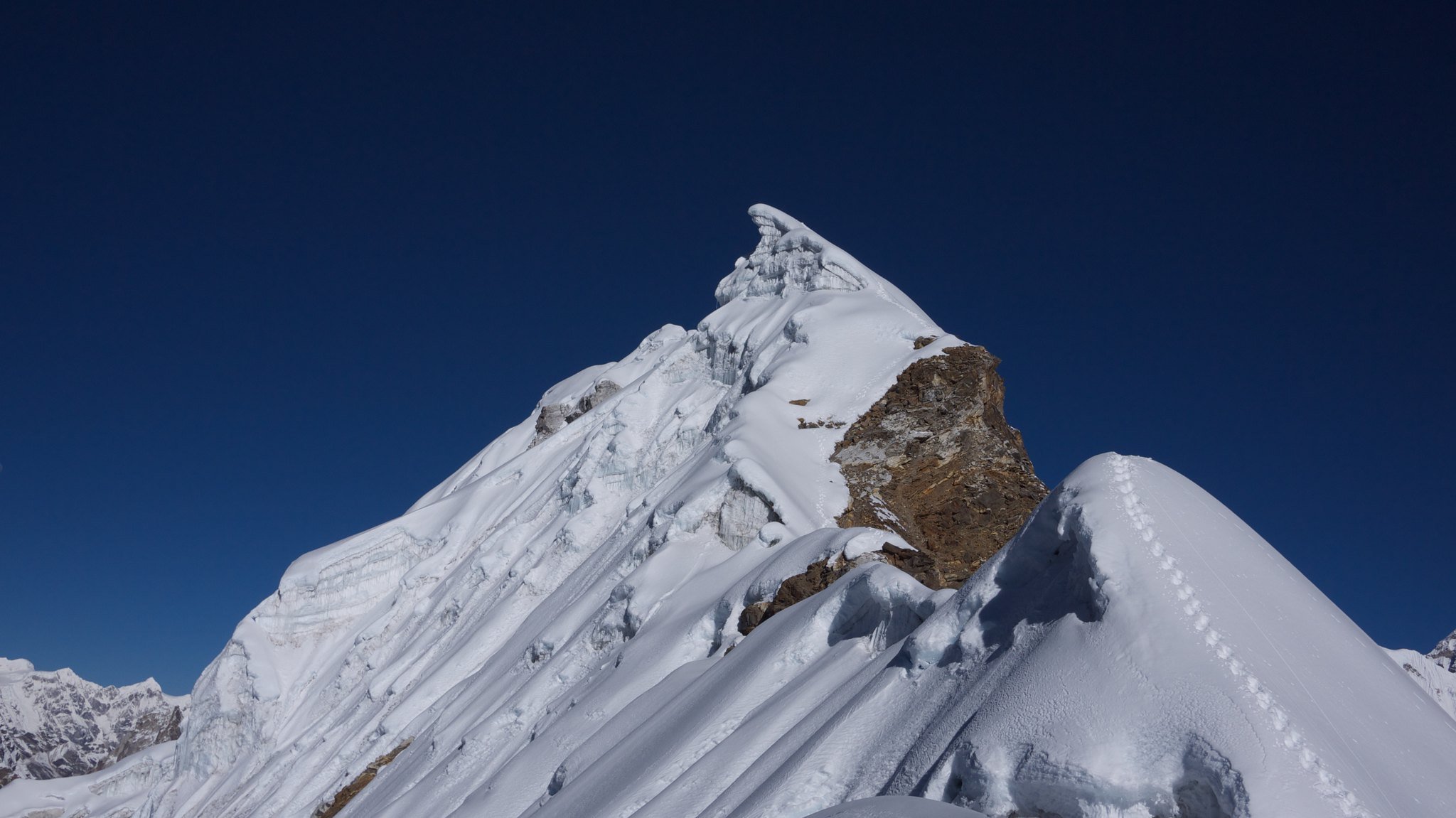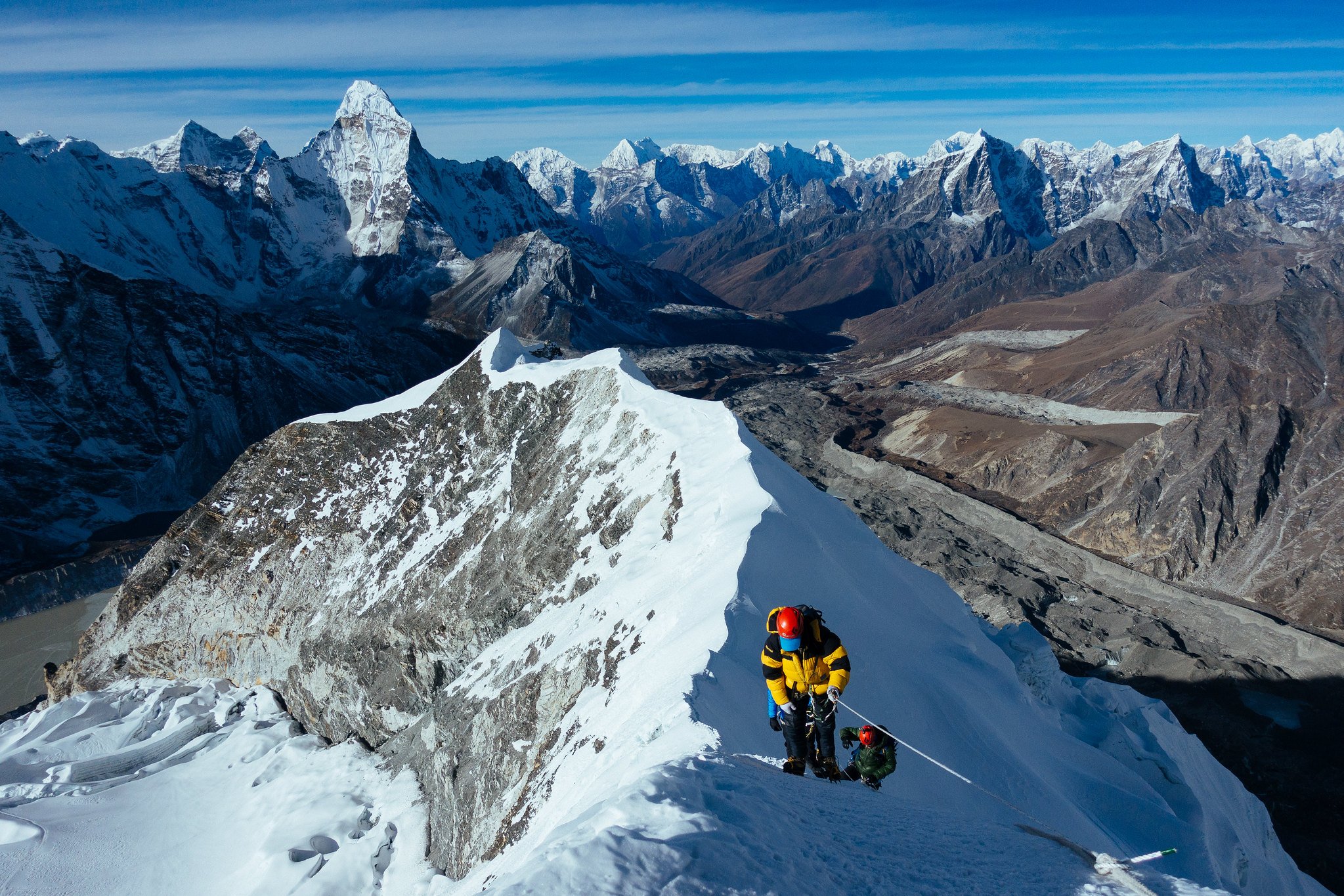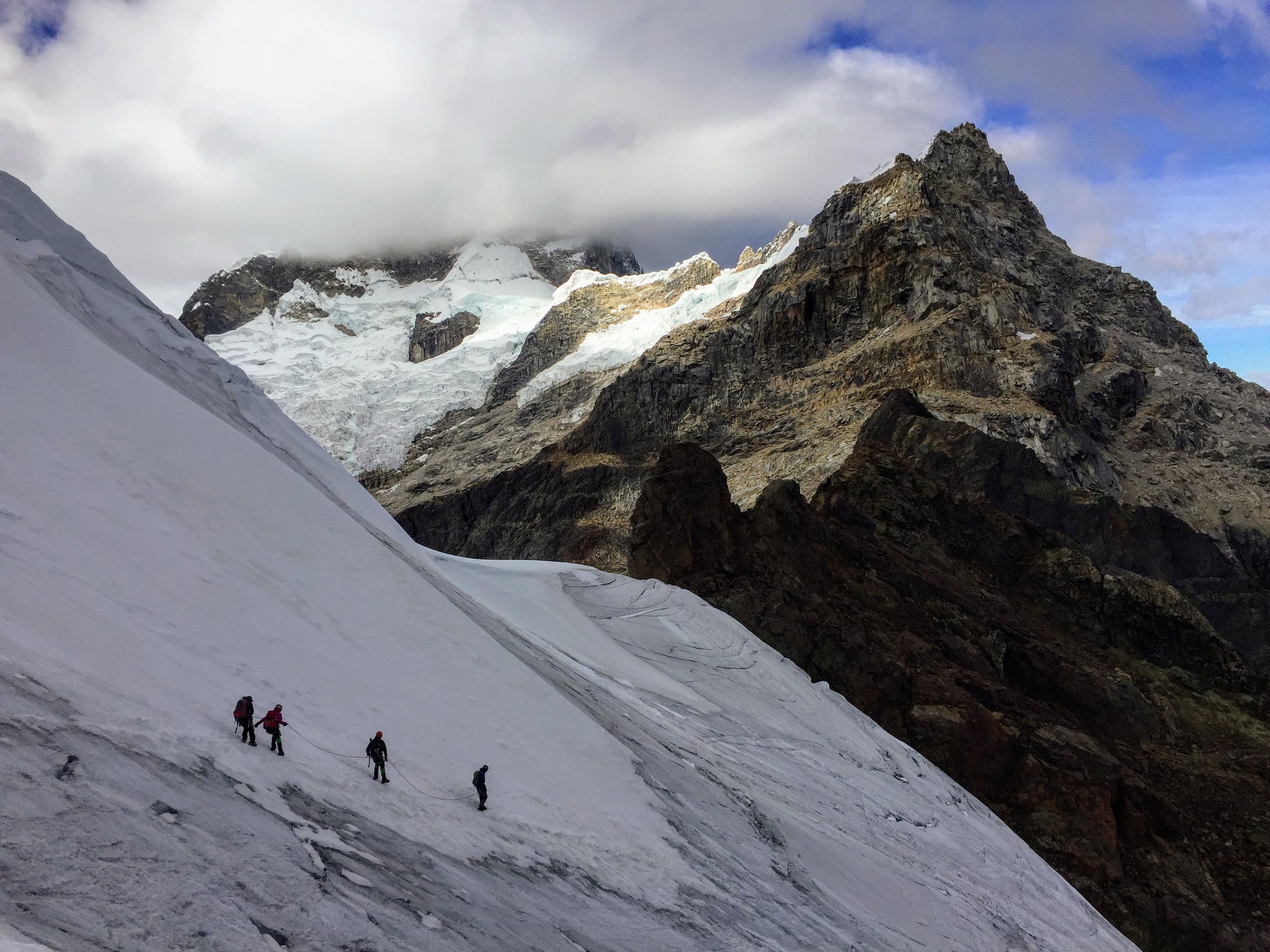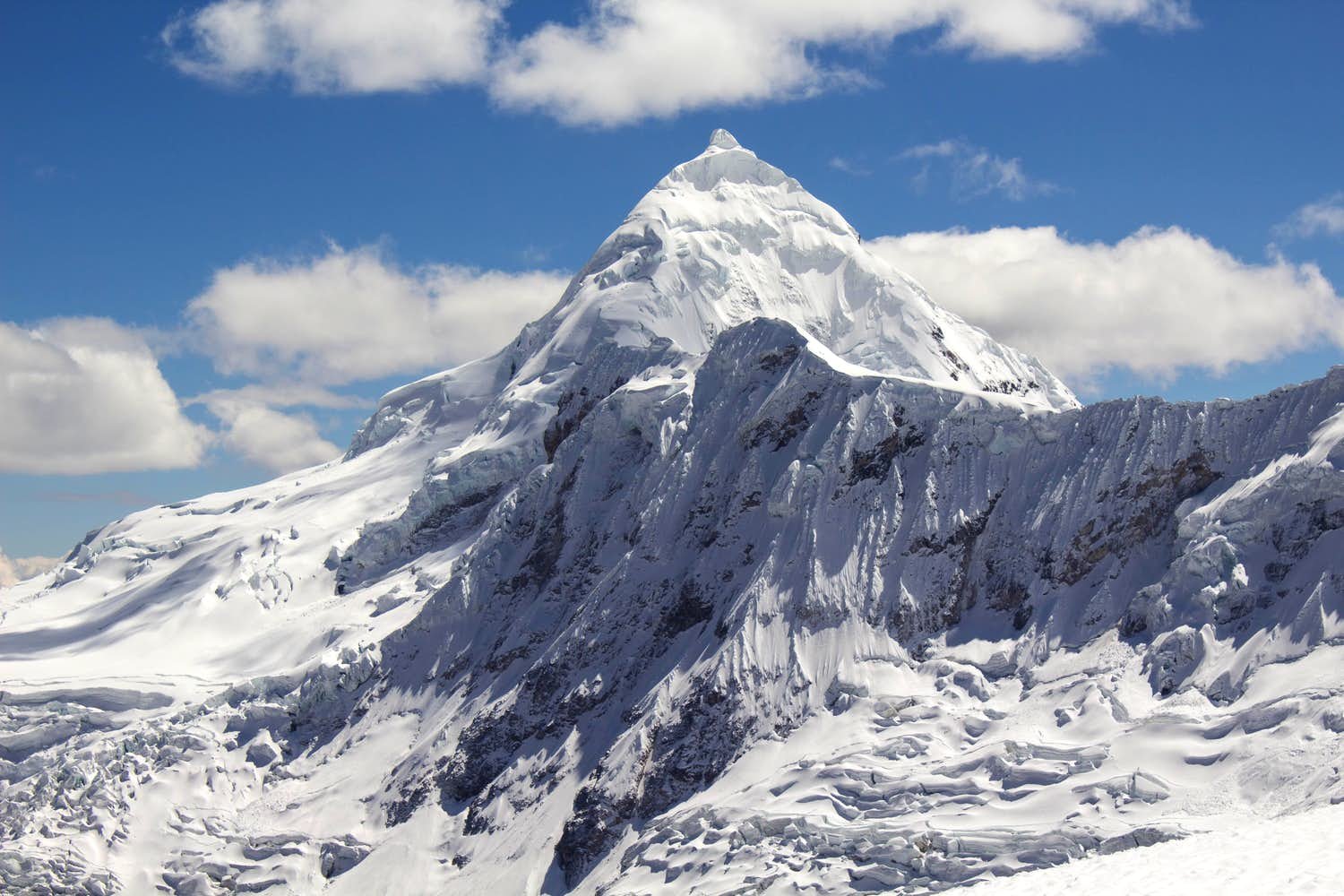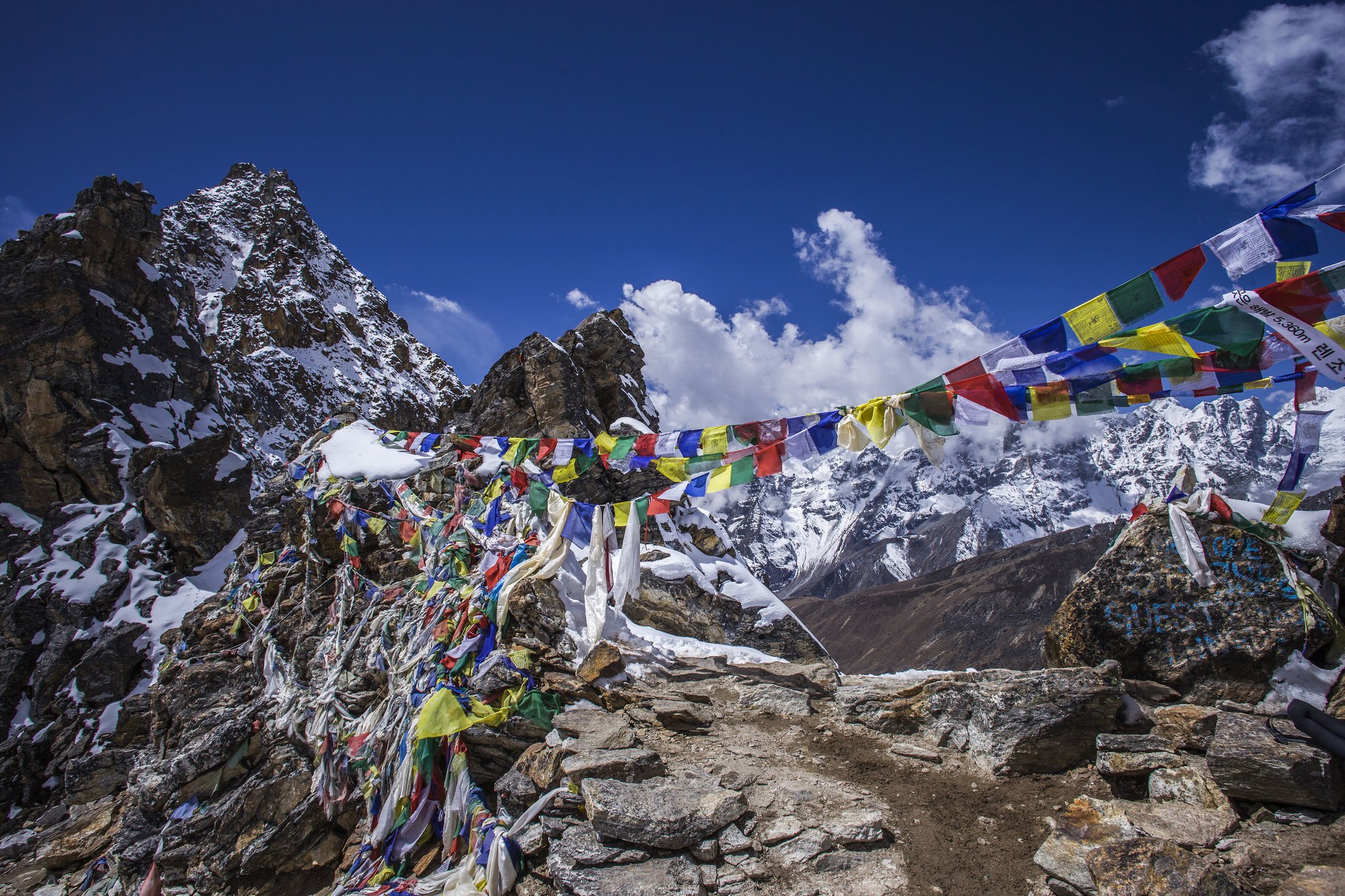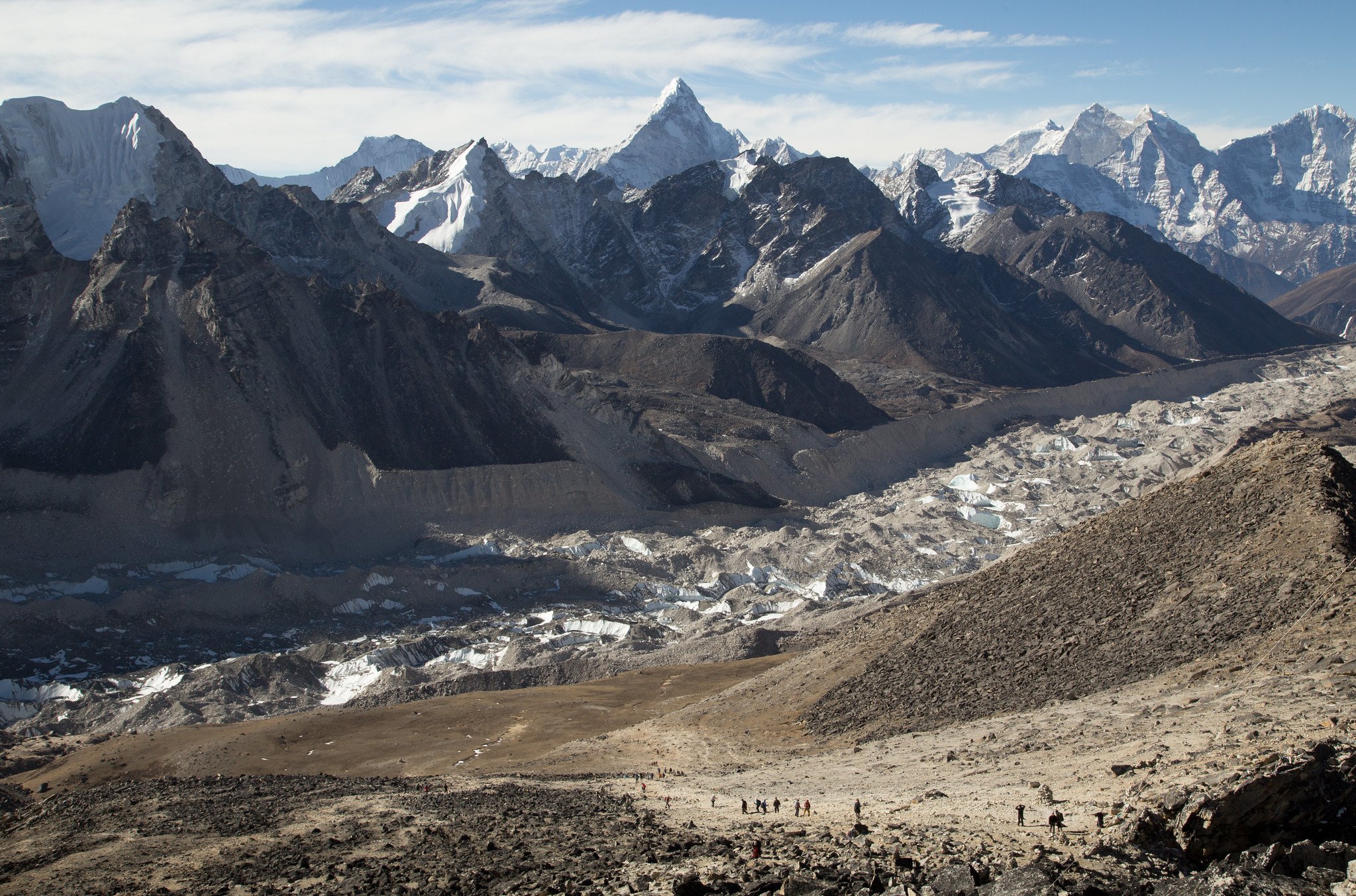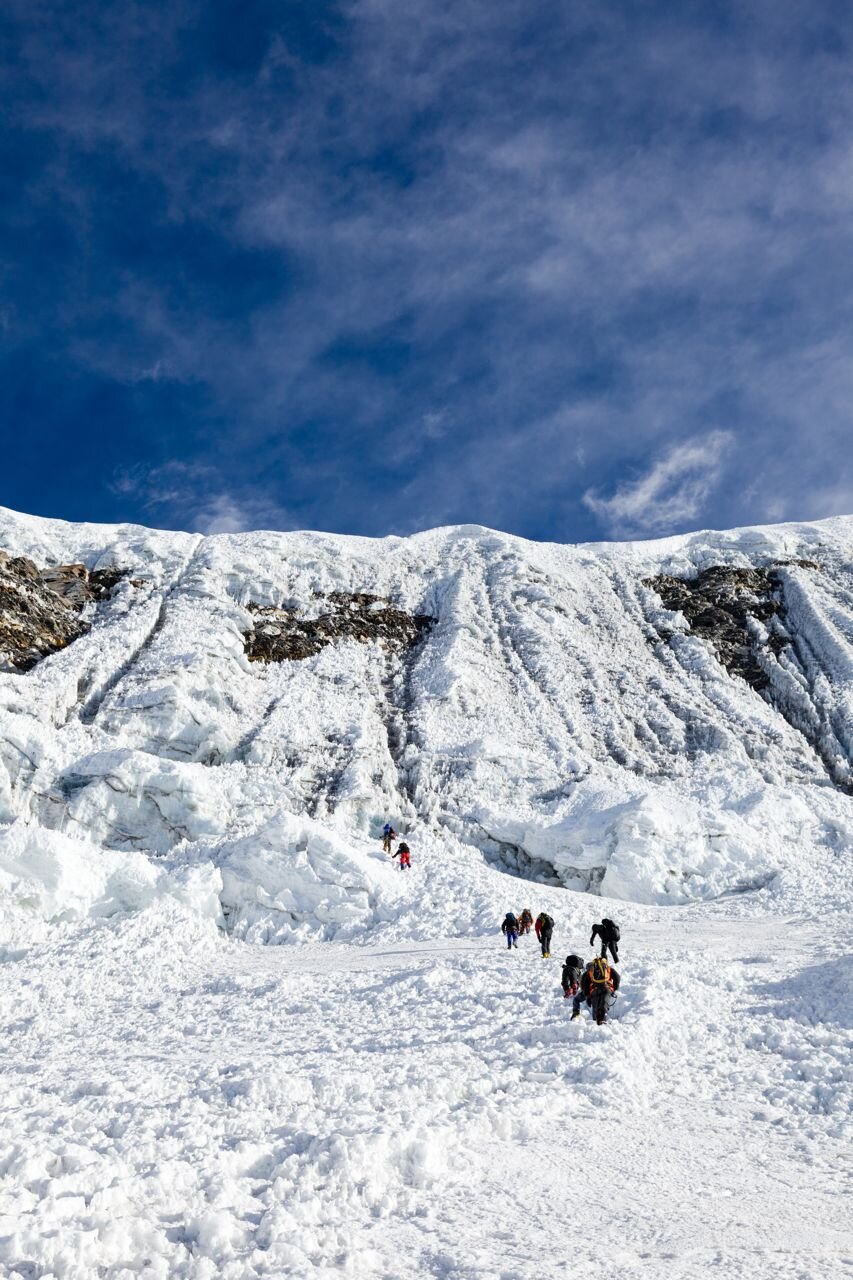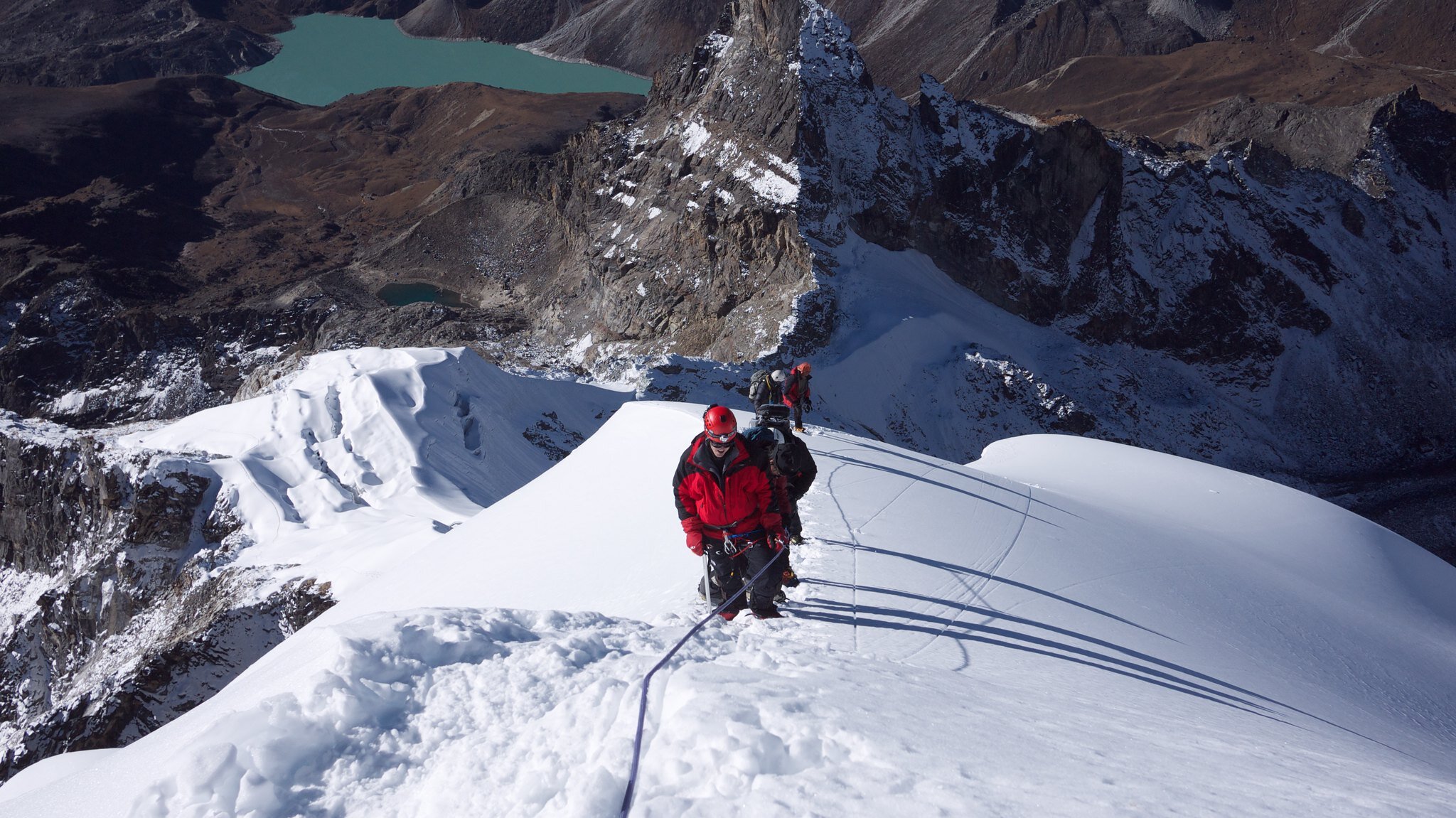13 Essential Things to Know About the Annapurna 5X Summit Challenge – NAMAS Adventure
Chulu range
The Annapurna 5X Summit Challenge is one of the most comprehensive multi-peak expeditions currently offered in the Himalayas. Designed for climbers aiming to progress beyond 6000 meters, this 30-day journey covers five iconic summits in the Annapurna region, each offering a different level of technicality, endurance, and adventure.
If you're planning to join this rare expedition with NAMAS Adventure, here's an in-depth guide covering the 12 most important things you need to know before setting out.
1. Which Peaks Will You Climb in the Annapurna 5X Challenge?
This expedition features five distinct 6000-meter class peaks:
Pisang Peak (6091m): A classic alpine peak ideal for initial acclimatization and confidence-building.
Chulu Far East (6059m): A beginner friendly peak.
Chulu East (6584m): The most technically demanding peak on the itinerary, featuring crevasse fields, steep alpine sections, and a near-vertical snow wall close to the summit.
Chulu West (6419m): Known for its sustained climbs and technical sections, including a vertical headwall at altitude.
Thorong Peak (6144m): A lesser-known gem offering a rewarding summit day with panoramic views of the Annapurna and Mustang regions.
Together, these five summits offer an intense and diverse mountaineering experience.
2. How Technically Demanding Is This Expedition?
The Annapurna 5X Challenge is suitable for beginner to intermediate level climbers with prior high-altitude experience. Chulu East is the most technical of the five, requiring proficiency in glacier travel and steep ascents. Unlike other commercial expeditions that rely heavily on fixed ropes, NAMAS uses guided rope systems on Chulu East to allow flexibility and better management of client safety in real-time conditions.
Chulu West and Far East are graded PD/3 on the Alpine scale, demanding good fitness, endurance, and familiarity with alpine gear.
3. When Should You Join This Expedition?
The best seasons to take on this expedition are Spring (March to May) and Autumn (September to November). These months provide the clearest skies and most stable weather conditions, which are crucial for a safe and successful climb. Winter climbing is possible but comes with greater risks, including unpredictable weather and closed tea houses. So, for the best experience, spring and autumn are your ideal windows.
4. How Long Is the Expedition and What’s the Itinerary?
This is a 30-day expedition that includes travel, acclimatization, technical climbs, and return logistics. It begins with arrival in Kathmandu and transitions to the Annapurna region via road. The summits are tackled in the following order: Pisang → Chulu Far East → Chulu East → Chulu West → Thorong Peak.
Time is built in for acclimatization, training refreshers, and contingency days to account for weather or altitude-related delays.
ITINERARY
Day 1 -2 Arrival, pick up at the airport by Namas staff. Briefings and gear check.
Day 3 Drive to Besi Sahar 5 - 6 hours
Day 4 Drive to Pisang 3300M
Day 5 Acclimatisation and training refresher day in Upper Pisang 3800M
Day 6 Pisang Peak base camp
Day 7 Pisang Peak high camp
Day 8 Summit Pisang Peak - Base camp to Pisang village
Day 9 Contingency day
Day 10 Pisang to Ngawal or Yak-kharka
Day 11 Chulu base camp (Far East and East)
Day 12 Chulu Far East high camp 5343M
Day 13 Chulu Far East Summit 6059M and back to BC
Day 14 Chulu East high camp 6100M
Day 15 Chulu East summit 6584M and back to BC to Manang
Day 16-17 Contingency days
Day 18 Manang arrival or rest day
Day 19 Trek to Ledar to Chulu West BC
Day 20 High camp (Porters up to advanced BC)
Day 21 camp 1 (6100M)
Day 22 Summit and back to high camp
Day 23 Contingency day
Day 24 BC to Ledar to Thorong Phedi
Day 25 Thorong Peak base camp
Day 26 Summit Thorong Peak 6144M and to MuktiNath
Day 27 Muktinath - Jomsom - Pokhara (Via Jeep)
Day 28 Pokhara Rest Day
Day 29 Kathmandu (Afternoon flight or private transport incase of flight cancellation)
Day 30 Departure
5. Who Should Join This Expedition?
This expedition is ideal for:
Climbers aiming to build experience for 7000m+ or technical Himalayan peaks
Adventure athletes with prior 5000m+ climbing experience
Those comfortable with 6–10 hour summit pushes and exposed alpine terrain
This is not a beginner expedition. Participants should be fit, familiar with mountain environments, and prepared for multi-day alpine climbs.
6. How Much Does It Cost and what is included?
For exact expedition quote please check our expedition page (link) which covers almost everything you’ll need for the entire journey:
A certified guide (IFMGA or NMA)
A 1:2 Sherpa-to-climber ratio
16 Weeks of training programs for 6000M from Training Peaks
Namas-branded gear (down jacket, cap, buff)
All trekking and climbing permits
Internal transportation to the trekking trailhead
Meals during the trek and expedition
Accommodation on the trek
All necessary climbing equipment, including tents, satellite phones, and oxygen cylinders
30kg personal weight allowance (with the option for extra porter service for an additional fee)
Welcome/ farewell dinner
This all-inclusive price ensures that you have everything needed for a safe, comfortable, and successful expedition.
7. Are Professional Guides Required?
Yes — and they are non-negotiable on this expedition. Several of the peaks involve technical routes, exposed terrain, and glacier travel. Our guides handle route fixing, risk management, altitude response, and logistics, giving climbers the best chance at a safe and successful summit. Their regional expertise also enhances cultural understanding and route planning.
8. How Is Acclimatization Managed?
A well-designed acclimatization plan is integrated into the itinerary:
Early summit of Pisang Peak helps pre-acclimatize
Multiple rest days between climbs
Overnight stays at high camps before major summit pushes
Built-in contingency days to allow flexibility and prevent altitude-related issues
This gradual ascent schedule ensures safety and improves summit success.
9. What Training Is Required for the Annapurna 5x summit challenge?
To take on this 5x summit challenge, you’ll need to be in great physical and mental shape. While the expedition is accessible to those with intermediate mountaineering skills, proper training is key. Here’s a recommended plan:
- Endurance Training: Long-distance running, hiking with a weighted pack, or cycling will help build the stamina needed for the long days of climbing.
- Strength Training: Focus on building leg and core strength through weight training and hill climbing.
- Technical Skills: Rope handling, crampon use, ice axe arrest (practice on rock or indoor walls if possible)
- Mental Resilience: High-altitude climbing requires mental toughness. Meditation, mindfulness, and visualization techniques can help you stay calm and focused when things get tough.
10. What Gear Is Needed for the Annapurna 5x summit challenge?
Having the right gear is critical for your safety and comfort. Here's what you'll need:
Double-insulated mountaineering boots
Ice axe, crampons, harness, helmet, ascender, belay device
Thermal base layers, down jacket and pants
Glacier glasses/goggles, waterproof gloves
-30°C rated sleeping bag
Backpack (60L+), duffel bag for porters
Hydration system, headlamp, and basic first-aid
NAMAS Adventure also offers gear rentals, ensuring you have top-quality equipment without the need to buy everything yourself.
11. What Food and Water Are Provided During the Expedition?
Food is an important part of your expedition, and NAMAS Adventure ensures you’re well-fed throughout the journey. On trekking days, meals are prepared at local tea houses, and while climbing, our Sherpa chefs will prepare nutritious meals to keep you energized. Staying hydrated is crucial, so make sure to drink 4-6 liters of water a day. Water is purified from natural sources or purchased from tea houses, and we provide hydration tablets to ensure your safety.
12. What Trip Insurance Is Required for the Expedition?
Comprehensive travel insurance is a must. Make sure your policy covers:
- Emergency evacuation (including by helicopter if necessary).
- Medical coverage for altitude sickness or injuries.
- Trip cancellation or interruption.
- Repartations
It’s also important that your insurance covers helicopter evacuation, as it could be essential in case of an emergency.
13. Which Other High-Altitude Peaks Can You Aim for After the 5X Summit Challenge?
Successfully completing the Annapurna 5X positions you for more advanced climbs. Logical next steps include:
Expeditions in the Karakoram or South America
The physical and technical experience gained here lays a strong foundation for 7000m+ Himalayan climbs and guided alpine-style expeditions worldwide.
Conclusion
The Annapurna 5X Summit Challenge is not just an expedition — it’s a personal and physical evolution. Over 30 days, you’ll climb five major 6000M+ peaks, gain critical alpine experience, and explore some of Nepal’s most breathtaking landscapes.
Whether you're preparing for your first 7000er or building toward the 8000M club, this challenge offers everything you need: altitude, technical exposure, skilled guiding, and remote Himalayan beauty.
Are you ready to take on the challenge? NAMAS Adventure will be with you every step of the way, ensuring a safe and successful journey. For more information or to book your spot, reach out to us at bookings@namasadventure.com.
Live Your Story.
NAMAS Adventure
Annapurna 5X summit challenge: Building Blocks for 7000m+ or technical expeditions
Chulu West and East
There’s something magical about the mountains — the vastness, the challenge, and the quiet beauty that stretches beyond the horizon. It’s the kind of place that calls you to test your limits, to push beyond what you think is possible. And if you’re like many mountaineers, that call is hard to ignore.
For those ready to take that leap, the Annapurna 5X Summit challenge, which includes Chulu East, Chulu West, Chulu Far East, Pisang Peak and Thorong Peak offers an incredible opportunity. These climbs are not just about reaching the summit — they’re about building the foundation for bigger adventures. They’re the first step in a journey that could eventually take you to the highest peaks in the Himalayas.
What You’ll Experience on the Way
Climbing these peaks isn’t just about reaching the summit — it’s about everything that happens on the way up. You’ll experience challenges that test your body and mind. There will be moments of doubt, but also moments of pure joy as you overcome those challenges. You’ll face the weather, deal with tiredness, and learn how to keep your focus when everything seems to be working against you.
And when you do finally stand on the summit — whether it’s Chulu West, Eat, Far East, Pisang Peak or Thorong Peak— you’ll experience that indescribable feeling of accomplishment. The view from the top is surreal, a reminder of how far you’ve come, and a glimpse of how much more there is to see.
Preparing for Bigger Adventures
Once you’ve completed the Annapurna Three Peak Expedition, you’ll be better prepared for the bigger, more challenging climbs. You’ll have the mental strength, technical skills, and high-altitude experience needed to take on climbs like Tilicho Peak, Baruntse, Himlung Himal, Annapurna IV or even the mighty Manaslu. These peaks give you the chance to understand what it’s like to be in the mountains for longer periods, where the challenges are tougher and the stakes are higher.
But that’s the beauty of climbing — it’s not just about the destination, it’s about the journey. Each climb, no matter the size, teaches you something new and pushes you to grow. The Annapurna 5x summit challenge is one of the most rewarding ways to get started on that journey, setting you up for success on the next, bigger challenge.
Ready to Take on the Annapurna 5x Summit challenge?
If you’re thinking about joining the us on this five summit expeditioin, or you’re interested in 6,000m+ peaks, we’re here to guide you. Our experienced guides, who are IFMGA or NMA-certified, will provide the support, knowledge, and encouragement you need to reach the top.
We understand that every climb is a personal journey, and we’re committed to making sure you feel safe, supported, and empowered throughout your expedition. From the technical aspects to the emotional highs and lows, we’re with you every step of the way.
If you’re ready for the challenge, we would love to have you join us on this unforgettable adventure. For more information, feel free to contact us at bookings@namasadventure.com.
Climb higher. Embrace the challenge. And become the adventurer you were always meant to be.
Live Your Story
NAMAS Adventure
Khumbu 3 Peak or Annapurna 5x Summits: Which 6000M Peak Challenge to Climb? – Namas Adventure
When it comes to choosing between the Khumbu 3 Peak Expedition and the Annapurna 5X Summit challenge, it really comes down to what type of adventure you’re craving. Both expeditions offer unique experiences in Nepal’s legendary mountains, but each has its own charm. So, which one will give you the experience you’re looking for? Let’s break it down and help you figure out which one suits you best.
Khumbu 3 Peak Expedition
If you’ve ever dreamed of standing beneath the shadow of Mount Everest, the Khumbu 3 Peak Expedition might just be your dream come true. This trek will take you through the heart of the Everest region, with climbs up Mera Peak, Island Peak, and Lobuche East, offering some of the most iconic views on the planet.
Breathtaking Views of Everest: There’s something magical about looking up and seeing Everest in all its glory. On the Khumbu 3 Peak Expedition, that’s your backdrop. Along the way, you’ll pass stunning vistas of Mount Everest, Lhotse, Makalu, and several other towering peaks. The scenery here is second to none.
Climbing Variety: The climbs themselves will challenge you in different ways. Mera Peak is more straightforward, but Island Peak and Lobuche East will push your skills. Island Peak is particularly technical, with a steel ladder over crevasses and a steep ascent to the summit. It's an exhilarating climb, one that makes you feel like you're truly on an adventure.
Immersive Sherpa Culture: The Khumbu region is rich in Sherpa culture, and throughout your journey, you’ll have the opportunity to learn about the people who call this rugged terrain home. The culture here is as awe-inspiring as the mountains themselves, and this expedition gives you a chance to connect with it on a personal level.
The Khumbu 3 Peak Expedition is perfect for anyone who dreams of Everest and is looking to challenge themselves both physically and mentally, while experiencing the deep-rooted Sherpa culture.
Annapurna 5X Summit challenge
If you’re drawn to quieter trails, breathtaking mountain scenery, and a bit less foot traffic, the Annapurna 5 peak Expedition might be more your style. Set in the stunning Annapurna region, this trek takes you through serene villages and alpine landscapes as you climb Pisang peak 6091M, Chulu East 6584M, Chulu West 6419M, Chulu Far East 6059M, and Thorong Peak 6144M.
Less Crowded, Just as Beautiful: The Annapurna region is just as stunning as the Everest region, but without the same level of traffic. If you’re looking for a more peaceful, less commercialized trekking experience, the Annapurna 3 Peak Expedition offers that. You’ll have more space to breathe and a chance to enjoy the beauty of the Himalayas without the crowds.
Cultural Immersion: As you trek through villages like Manang and explore the Annapurna massif, you’ll get a much deeper sense of local life. The Annapurna region is home to rich traditions, and this trek offers you a chance to connect with the communities in a more relaxed setting.
Challenging, but Rewarding Climbs: The climbs here are a perfect mix of technical and moderate. Chulu West is the most technical of the three, with some tricky climbing near the summit, while Pisang Peak is more moderate but still a solid challenge. The Annapurna peaks offer a different kind of challenge, one that combines a sense of adventure with a touch of serenity.
If you're someone who prefers a more peaceful, cultural experience while still facing a great physical and mental challenge, the Annapurna 5x Summit challenge will feel like home.
So, Which One Should You Choose?
Ultimately, the decision between the Khumbu 3 Peak Expedition and the Annapurna 5 Peak Expedition depends on what kind of experience you're hoping to get out of it.
Choose the Khumbu 3 Peak Expedition if you want the full Everest experience — think iconic views, a variety of climbing challenges, and the chance to immerse yourself in the unique Sherpa culture. If you’ve always dreamed of seeing Everest up close and want to push yourself with some technical climbs, this is the expedition for you.
Choose the Annapurna 5X summit Expedition if you want a quieter, more peaceful trek in a beautiful, less-crowded region. The Annapurna massif is every bit as stunning as Everest, and with its beautiful villages and serene landscapes, you’ll experience the Himalayas in a more intimate setting. Plus, the climbing is no less challenging — you’ll still be tested, but with a slightly different vibe.
Both expeditions are designed for climbers who are physically prepared and ready to take on 6000-meter peaks, and both will challenge you in different ways. Both are full of rewards — stunning landscapes, unforgettable summits, and the sheer joy of being in the heart of the Himalayas.
The Bottom Line: Both Are Life-Changing Experiences
Whichever you choose, both the Khumbu 3 Peak Expedition and the Annapurna 5 peak challenge Expedition will offer you the chance to test your limits, experience some of the most incredible landscapes on Earth, and leave you with memories that last a lifetime. They’re both excellent introductions to Himalayan climbing and will help you develop skills and confidence for bigger climbs in the future. At the end of the day, it’s all about what kind of experience you’re looking for. Whether it’s the towering peaks and cultural richness of Khumbu or the quieter, intimate beauty of Annapurna, you’ll find adventure, challenge, and inspiration in either one.
If you’re ready for the challenge, we would love to have you join us on this unforgettable adventure. For more information, feel free to contact us at bookings@namasadventure.com.
Climb higher. Embrace the challenge. And become the adventurer you were always meant to be.
Live Your Story!
12 Important things to know about Lobuche east and island peak expedition, Nepal - Namas Adventure
The Lobuche East and Island Peak Combo Expedition is one of the most exciting and challenging adventures you can take in Nepal. With stunning views of the Khumbu region and the thrill of climbing over 6000 meters, it’s a journey that will test your limits and leave you with unforgettable memories. If you’re considering this expedition with NAMAS Adventure, here are 12 essential things you should know before you go.
1. Which Peaks Are Included in the Lobuche East and Island Peak Combo Expedition?
This expedition takes you to two incredible peaks in the Khumbu region:
Island Peak 6189M is one of the most popular 6,000M+ climbing peaks in Nepal. The climb is suitable for beginner/intermediate level climbers. The peak is actually an extension of the ridge coming down off the south end of Lhotse Shar. Imja Tse is a popular mountaineering objective for climbers in Nepal, with its standard climbing route having a difficulty rating of 2B.
Lobuche East Peak 6119M is another popular 6,000+ m climbing peak in the Khumbu region. This peak is also suitable for beginner/intermediate-level climbers. The peak is mostly used by Everest summit teams as one of the training/acclimatisation peaks before making attempting the expedition.
Together, these peaks offer an incredible combination of technical difficulty and breathtaking scenery, with both peaks standing over 6000 meters.
2. Best Time to Climb the Lobuche East and Island Peak Combo Expedition
The best seasons to take on this expedition are Spring (March to May) and Autumn (September to November). These months provide the clearest skies and most stable weather conditions, which are crucial for a safe and successful climb. Winter climbing is possible but comes with greater risks, including unpredictable weather and closed tea houses. So, for the best experience, spring and autumn are your ideal windows.
3. Can You Shorten the Lobuche East and Island Peak Expedition?
Yes, if you're short on time, the Signature Climb option is perfect for you. This streamlined 18-day itinerary includes a shared helicopter flight from Kathmandu - Lukla and Dingboche - Lukla - Kathmandu, saving trekking time while still offering a full and rewarding experience.
4. How Much Does It Cost to Join the Lobuche East and Island Peak Expedition?
We offer two options for the Lobuche East and Island Peak Expedition: Please check our website for cost details (Link)
A certified guide (IFMGA or NMA)
A 1:2 Sherpa-to-climber ratio
🚁 Shared Helicopter. Kathmandu - Lukla. Dingboche - Lukla - Kathmandu (Signature climb)
12 Weeks of training programs for 6000M from Training Peaks
Namas-branded gear (down jacket, cap, buff)
All trekking and climbing permits
Internal transportation to the trekking trailhead
Meals during the trek and expedition
Accommodation on the trek
All necessary climbing equipment, including tents, satellite phones, and oxygen cylinders
30kg personal weight allowance (with the option for extra porter service for an additional fee)
Welcome and farewell dinners
This all-inclusive price ensures that you have everything needed for a safe, comfortable, and successful expedition.
5. Are Guides Necessary for the Lobuche East and Island Peak Expedition?
Yes, guides are absolutely essential. To obtain a permit for climbing two peaks, it is mandatory to work with a registered local company and hire guides. We strongly recommend that beginner to intermediate-level climbers climb with guides for their safety and to maximize their experience. This expedition lasts for 18 to 25 days, and the climb will be physically demanding, so having experienced guides is essential.
When climbing the Island Peak route, you will be required to navigate through crevasses and cross ladders, and new challenges may present themselves each climbing season. Even experienced climbers or guides who prefer to venture into new routes will still be required to have a local guide accompanying them. Thus, legally, guide assistance is mandatory for climbing these peaks.
6. What is the Best Acclimatization Plan for the Lobuche East and Island Peak Expedition?
Acclimatization is crucial when climbing at high altitudes. NAMAS Adventure has carefully planned the itinerary to ensure you have plenty of time to adjust to the thinning air. Here’s the general approach:
- Gokyo Ri and Cho La: You’ll hike upto Gokyo Ri (5383 M) and Cho La (5363 M), allowing your body to adjust to the altitude.
This gradual approach helps prevent altitude sickness and gives you the best chance for a successful summit.
7. What Training Is Required for the Lobuche East and Island Peak Expedition?
To take on the Lobuche East and Island Peak combo, you’ll need to be in great physical and mental shape. While the expedition is accessible to those with intermediate mountaineering skills, proper training is key. Here’s a recommended plan:
- Endurance Training: Long-distance running, hiking with a weighted pack, or cycling will help build the stamina needed for the long days of climbing.
- Strength Training: Focus on building leg and core strength through weight training and hill climbing.
- Technical Skills: If you’re new to mountaineering, take some courses to get familiar with climbing gear like ropes, crampons, and ice axes.
- Mental Resilience: High-altitude climbing requires mental toughness. Meditation, mindfulness, and visualization techniques can help you stay calm and focused when things get tough.
8. How Hard Is the Lobuche East and Island Peak Expedition?
The expedition is moderately difficult, but the challenges increase as you summit each peak, Island Peak is semi- technical peak, requiring advanced climbing skills, particularly when dealing with steep, icy slopes. Lobuche East is a bit less challenging but still requires good endurance and climbing technique. You’ll spend long days (8-10 hours) climbing at high altitudes, which will test both your physical and mental endurance.
9. What Gear Is Needed for the Lobuche East and Island Peak Expedition?
Having the right gear is critical for your safety and comfort. Here's what you'll need:
- Climbing Boots: Sturdy, insulated boots for both trekking and climbing.
- Climbing Gear: Crampon, ice axe, rope, Ascender, belay device, harness, and helmet.
- Warm Clothing: Layered clothing is essential (down jacket, down pant, thermals, fleece).
- Sleeping Bag: Rated for temperatures as low as -20°C.
- Gloves and Goggles: Protect your hands and eyes from the cold and high-altitude sun.
NAMAS Adventure also offers gear rentals, ensuring you have top-quality equipment without the need to buy everything yourself.
10. What Food and Water Are Provided During the Expedition?
Food is an important part of your expedition, and NAMAS Adventure ensures you’re well-fed throughout the journey. On trekking days, meals are prepared at local tea houses, and while climbing, our Sherpa chefs will prepare nutritious meals to keep you energized. Staying hydrated is crucial, so make sure to drink 4-6 liters of water a day. Water is purified from natural sources or purchased from tea houses, and we provide hydration tablets to ensure your safety.
11. What Trip Insurance Is Required for the Lobuche East and Island Peak Expedition?
Comprehensive travel insurance is a must. Make sure your policy covers:
- Emergency evacuation (including by helicopter if necessary).
- Medical coverage for altitude sickness or injuries.
- Trip cancellation or interruption.
It’s also important that your insurance covers helicopter evacuation, as it could be essential in case of an emergency.
12. Which Other High-Altitude Peaks Can You Aim for After the Lobuche East and Island Peak Expedition?
Once you've completed the Lobuche East and Island Peak combo, you may want to set your sights on even higher peaks. Here are a few suggestions for your next challenge:
Each of these peaks presents unique challenges, and the Lobuche East and Island Peak combo expedition will serve as a solid foundation for tackling them.
Are you ready to take on the challenge? NAMAS Adventure will be with you every step of the way, ensuring a safe and successful journey. For more information or to book your spot, reach out to us at bookings@namasadventure.com.
Live Your Story.
NAMAS Adventure
12 Essential Things to Know About the Annapurna 5X Summit challenge, Nepal- NAMAS adventure
Chulu range in the Annapurna region.
1. Which Mountains Does the Annapurna 5x summit challenge Include?
The Annapurna 5x summit challenge includes FIVE impressive peaks that will challenge even experienced climbers and offer thrilling experiences for those looking to scale 6000+ meter mountains:
- Pisang Peak (6091M): Known for its moderate but still demanding technical climb, Pisang Peak provides an excellent introduction to alpine climbing with stunning views of the Annapurna massif.
- Chulu West (6419M): This peak is semi - technical climb, offering climbers an exciting and demanding ascent. It includes navigating crevasses and tackling a 90-degree vertical wall near the summit.
- Chulu East (9584M): Chulu East is the most technical climb of all and this peak is climb in alpine style with guided rope.
- Chulu Far East (6049M): A moderately technical climb, suitable for climbers looking to push their limits without extreme technical challenges.
- Tilicho Peak (6144M): The final summit and least technical climb in amongst the 5 6000ers in the itinerary
2. When is the Best Time to Climb the Annapurna 5xSummit challenge?
The best time to climb this expedition is during the Spring (March - May)and Autumn (September - November) seasons. These months offer the clearest skies and the most stable weather conditions, allowing for the safest and most enjoyable experience. While it’s possible to climb in winter, this season brings higher risks, including unpredictable weather conditions and closed tea houses. For an optimal experience, spring and autumn are ideal.
3. Is it Possible to Shorten the Annapurna 5xsummit Expedition?
Yes, it is possible to shorten the expedition by using helicopters for specific portions of the journey. After summiting the final peak, you can fly back to Kathmandu from either the base camp or a nearby village. Keep in mind that helicopter charter services can cost between $3500 and $4500 depending on the drop-off location and number of passengers. This service is available for those looking to expedite their journey after completing the climb.
4. How Much Does It Cost? What Does the Cost Include?
Our Annapurna 5x Summit challenge price (please see our website). This all-inclusive price ensures that you are well taken care of during every aspect of your journey. Here’s a breakdown of what’s included:
Certified guide leader (IFMGA or NMA)
1:2 Sherpa to climber ratio
Namas branded gear (down jacket, cap, buff)
All trekking and climbing permits
Internal transportation to and from the trekking trailhead
All meals during trekking and expedition days
Accommodation during the trek
Equipment for the climb (including tents, satellite phones, and oxygen cylinder)
30kg personal weight allowance (additional porter can be arranged for an extra fee)
Welcome or farewell dinners
5. Are Guides Necessary for the the annapurna 5xsummit challenge?
Yes, guides are mandatory for all peak climbing expedition in Nepal, not only for safety and legal reasons but also to ensure the highest chance of success. Guides with years of experience navigating the Annapurna region are invaluable for the technical challenges of climbing peaks like Chulu East/West, which requires climbing vertical walls and navigating ice-covered slopes. Additionally, the mandatory presence of a guide helps climbers overcome logistical hurdles and provide the support needed during the high-altitude trek. The guide's expertise ensures a smoother, more enjoyable expedition.
6. What is the Best Acclimatization Itinerary?
Acclimatization is crucial for high-altitude climbing, and our carefully designed itinerary ensures gradual ascent to help your body adjust. The following approach has been formulated based on years of experience and understanding of the challenges posed by high altitudes:
Pisang Base Camp: You will first acclimatize by spending time at Pisang Base Camp (4380m) and high camp (5400m) before summiting Pisang Peak. This slow and steady approach ensures your body adapts to the thinner air at higher elevations.
Chulu Far East: After Pisang, the expedition continues to Chulu Far East Base Camp (4600m) and then progresses to the high camp (5400m). The acclimatization days are key for success on the climb.
7. What Training Is Required for the Annapurna 5x Summit Expedition? Can You Suggest a Training Plan?
As the itinerary suggest (climbing 5x6000m peaks) this expedition is demanding journey, requiring participants to be in top physical and mental condition. While the climb is accessible to those with intermediate mountaineering skills, proper training is essential for success.
Here’s a recommended training plan:
- Endurance Training: Focus on aerobic exercises like long-distance running (15-20km), cycling, or hiking with a weighted pack (10-15kg).
- Strength and Stamina: Incorporate weight training and hill climbing to build leg and core strength.
- Technical Skills: If possible, take mountaineering classes to learn how to use climbing tools (ropes, crampons, ice axes) and navigate challenging terrain.
- Mental Preparation: High-altitude climbing requires mental resilience. Visualization exercises, meditation, and mindfulness can help manage stress on the mountain.
8. How Hard is the Annapurna 5Xsummit challenge?
The expedition challenge is moderately challenging climb, but the difficulty increases as you summit each peak. Chulu East and west is the most technically demanding with a rating of AD/3, requiring climbing on steep, icy terrain. Pisang and Chulu Far East are more manageable but still require solid endurance and technique. Each summit will demand long days of climbing, often lasting 8-10 hours of strenuous activity. The climb also takes place at altitudes over 6000 meters, which adds an additional physical challenge. Acclimatization, fitness, and mental fortitude are key to overcoming the difficulties posed by the mountain environment.
9. Clothing and Gear Requirements? Can I Rent Gear?
Proper gear is critical for success of this expedition. Here’s a general list of recommended clothing and equipment:
- Trekking and Mountaineering Boots: Sturdy, insulated boots for both trekking and climbing.
- Warm, Layered Clothing: Ensure proper layering for warmth (down jacket, fleece, thermals).
- Climbing Gear: Crampons, ice axe, helmet, harness, ropes, and a climbing rope.
- Sleeping Bag: Rated for temperatures as low as -20°C.
- Gloves and Goggles: Protect your hands and eyes from the cold and sun.
Namas Adventure offers high-quality gear rentals, ensuring you have the best equipment without needing to invest in everything yourself. We recommend using our gear, as it is meticulously maintained and tested for reliability in the harsh Himalayan environment.
10. What Types of Foods Are Available During this expedition challenge? Is Clean Water Available?
Meals are an essential part of the climbing experience. While on expedition, you can expect hearty meals designed to fuel your climb. On trekking days, food is prepared at the local tea houses, and during the high-altitude climb, our Sherpa chefs will prepare nutritious meals to keep you energized. Water is crucial at high altitudes, and we recommend drinking 4-6 liters per day to stay properly hydrated. Water is purified from natural sources or purchased from local tea houses, and we also provide hydration tablets for extra safety.
11. What Trip Insurance Will I Need for this expedition challenge? Do I Need Helicopter Evacuation Coverage?
Comprehensive travel insurance is a must for all high-altitude expeditions. Insurance should cover:
Emergency evacuation (including helicopter evacuation)
Medical coverage (for altitude sickness or injury)
Trip cancellation and interruption
Reparations
For helicopter evacuation, it is critical to ensure your policy covers this. In the event of an emergency, evacuation by helicopter will be arranged, with upfront costs reimbursed upon your return with the necessary documentation.
12. Which expedition Can I Aim for After the Annapurna 5x summit challenge?
Once you've completed this exciting expedition challenge, you might want to continue challenging yourself with even higher peaks. Here are a few recommendations for those looking to take their climbing skills to the next level:
Each of these peaks presents unique challenges, and completing the Annapurna 5xsummit challenge is a great stepping stone for tackling them.
Conclusion
The Annapurna 5X summit challenge Expedition offers an exciting, challenging, and rewarding experience for climbers of intermediate to advanced levels. This 30-day journey takes you through some of the most stunning landscapes in Nepal, from the Annapurna circuit to the summits of three magnificent peaks. With proper preparation, training, and guidance, this expedition will be one of the most memorable achievements of your mountaineering career. This expedition is a true test of both physical endurance and mental resilience — essential preparation for higher, more demanding climbs.
If you’re ready for the challenge, we would love to have you join us on this unforgettable adventure. For more information, feel free to contact us at bookings@namasadventure.com.
Live Your Story.
NAMAS Adventure
Alpamayo 5,947m Expedition Strategy – Namas Adventure
Alpamayo, located in the Peruvian Andes within the breathtaking Cordillera Blanca mountain range, is widely regarded as one of the most stunning peaks in the world. Standing at 5,947 meters, its dramatic pyramid shape and striking snow-capped ridges have earned it the title of "the most beautiful mountain in the world" by _Alpinismo_ magazine in 1966. Alpamayo is a true jewel of the Andes, offering a climbing experience that combines technical challenges with awe-inspiring views.
If you’re looking to elevate your mountaineering skills and experience the magnificence of the Cordillera Blanca, the Alpamayo expedition is the perfect opportunity. This journey is best suited for climbers with prior experience in high-altitude and technical ice climbing, as it presents both challenges and rewards that will test your abilities.
Our Expedition Strategy: Technical Precision and Safety First
While Alpamayo is renowned for its beauty, it is also a formidable challenge. Climbers will need to navigate the French Direct route, which features steep ice pitches with angles of 50-65 degrees. Our strategy is designed with a focus on safety, efficiency, and careful acclimatization to ensure a successful summit. We prioritize technical climbing preparation, gradual altitude acclimatization, and a supportive guide to climber ratio to maximize the safety and success of the expedition.
With a 1:2 guide to climber ratio, our experienced guides will provide personalized attention and guidance throughout the climb. We believe that every climber should feel supported, confident, and capable as they progress toward the summit of Alpamayo.
The Journey Begins: Trek to Base Camp
The adventure kicks off in Huaraz, where climbers will acclimatize and organize their gear before setting out for the trek. The journey to Base Camp begins with a scenic hike to Churup Lake (4,450m), followed by a trek from Cashapampa to Llamacorral, and ultimately to Base Camp at 4,300 meters. This trek offers stunning views of the surrounding mountains and allows climbers to begin acclimatizing to the altitude in preparation for the more challenging stages of the expedition.
Once at Base Camp, we’ll take a rest day to fully acclimatize and prepare for the ascent.
Acclimatization and Rest: Preparing for Higher Camps
Alpamayo high camp 5350M
From Base Camp, we’ll continue our ascent to Moraine Camp (4,900m), where we’ll spend a day resting and acclimatizing. This ensures that climbers have time to adjust to the increasing altitude before pushing further up the mountain. After Moraine Camp, we will continue to High Camp, situated at 5,350 meters—our final stop before the summit push.
Each stage is carefully designed to allow climbers to adjust gradually to the high-altitude environment, reducing the risks associated with altitude sickness and ensuring optimal performance when it counts most.
The Summit Push: French Direct Route
The final push to the summit of Alpamayo is the ultimate test of climbing ability, and the French Direct route is renowned for its technical difficulty and beauty. The route involves six steep ice pitches, with angles ranging from 50-65 degrees. Climbers will navigate a vertical ice wall using ice axes and crampons to ascend frozen slopes, making the use of efficient kick steps and proper ice axe technique essential.
The summit itself is accessed via a narrow ridge, which presents both a challenge and a rewarding sense of accomplishment. Climbers should be prepared for the rigors of ice climbing, as well as the need for excellent endurance and precise technique. Along the way, we will install fixed ropes on the most exposed and steep sections to ensure safety.
Standing at 5,947 meters, the summit of Alpamayo offers panoramic views of the Cordillera Blanca and surrounding peaks.
Descent: A Safe Return
The descent from Alpamayo requires caution and precision. Climbers will rappel down the French Direct route using 8 rappel stations, which will be established using V-threads to ensure safety. Descending in a controlled manner is crucial to avoid any potential accidents and to conserve energy for the journey back to Base Camp.
After reaching Base Camp, climbers will have time to reflect on the accomplishment, share in the joy of the experience with fellow climbers, and prepare for the journey back to Huaraz.
Back-Up Summit Option: Quitaraju Peak
Quitaraju 6,036M
In the event that Alpamayo becomes inaccessible due to weather conditions or other natural factors such as avalanches, we have a backup plan in place. Quitaraju Peak, another prominent summit in the Cordillera Blanca, will serve as an alternative for climbers who still want to experience a challenging ascent in the region.
Pre-Requisite Requirements and Technical Skills
To join our Alpamayo expedition, climbers should have prior experience on 6,000-meter peaks or similar high-altitude climbs. A solid foundation in ice climbing and multi-pitch climbing is essential. Specific skills required include:
Multi-pitch ice climbing, with experience on slopes of 50-65 degrees
Prior experience on peaks like Lobuche East, Island Peak, Chulu West, Aconcagua, or similar mountains in the 4,000m to 6,000m range
Proficiency in rock climbing (up to grade 5.10) and ice climbing (WI3-WI4)
Advanced multi-pitch abseiling and rappel knowledge
These skills will ensure you are prepared to tackle the technical challenges of the French Direct route and safely navigate the ascent and descent.
Why Join Our Alpamayo Expedition?
At Namas Adventure, we don’t just aim to help you summit a peak—we aim to provide an experience that challenges you physically, mentally, and emotionally while allowing you to connect with the raw beauty of the Andes. Whether you're an experienced mountaineer looking for a technical challenge or a climber eager to experience one of the most beautiful mountains in the world, this expedition offers the opportunity to achieve something truly extraordinary.
If you're ready to take on Alpamayo and create memories that will last a lifetime, reach out to us at bookings@namasadventure.com. Let's begin the adventure of a lifetime.
LIVE YOUR STORY
NAMAS ADVENTURE
2025 departures 6000M Expeditions - Namas Adventure
Photo - Ivan at Lobuche East. 2024 Fall expedition.
2025 departures
6000M Expeditions
Are you gearing up for your first mountaineering adventure or eager to challenge with multiple 6000M summits in the Himalayas? At Namas Adventure, we are excited to announce our 2025 departures for 6000M peaks, designed to cater to everyone from entry-level climbers to experienced adventurers. For detailed information on each expedition, please click on the expedition name and discover the perfect challenge for you!
6000M
Ideal for climbers who possess advanced technical skills, a high level of fitness, and significant prior climbing experience.
Intermediate Level
Perfect for those seeking multi-summit challenges, this option is designed for climbers with some technical climbing knowledge and excellent fitness levels.
The two or combo peak expedition is ideally suited for adventurers who have a good level of fitness and technical climbing skills, making it an excellent choice for those looking to tackle multiple summits.
Entry Level
Ideal for climbers with basic technical skills and good fitness, this adventure is designed for those eager to learn the fundamentals of Himalayan climbing. It's the perfect starting point for summiting your first 6000M peak in the Himalayas, providing a foundational experience in a spectacular setting.
Whether you’re aiming to elevate your climbing abilities or summit multiple 6000M peaks, Namas Adventure offers an expedition tailored for you. Join us in 2025 to soar beyond the clouds and experience the extraordinary.
Inquire here
Namas Adventure Team
LIVE YOUR STORY
Khumbu Three Peak Expedition vs. Annapurna Three Peak Expedition: A Comprehensive Comparison
Khumbu Three Peak vs. Annapurna Three Peak Expedition: A Comprehensive Comparison
Introduction
If you're exploring your next mountaineering adventure and want to challenge yourself with a once-in-a-lifetime adventure climbing 6,000 meters in the Himalayas, we present two exciting triple summit expeditions: the Annapurna Three Peak Expedition and the Khumbu Three Peak Expedition challenge. These expeditions stand out for their unique challenges and breathtaking landscapes, serving as a pure test of endurance and offering thrilling summit adventures amidst stunning beauty. Both involve summiting three significant peaks, providing an unparalleled experience for climbers. This article delves into a detailed comparison to help you choose the expedition that best aligns with your aspirations and capabilities.
Overview of the Expeditions
Khumbu Three Peak Expedition
Location: Khumbu (Everest), and Mera region. Eastern Nepal
Peaks Summited:
Mera Peak: 6,476 meter (21,246 feet)
Island Peak (Imja Tse): 6,189 meters (20,305 feet)
Lobuche East Peak: 6,119 meters (20,075 feet)
Duration: 30 days
Highlights: Iconic views of Everest, vibrant Sherpa culture, famous trekking routes
Annapurna Three Peak Expedition
Location: Annapurna Region, Central Nepal
Peaks Summited:
Chulu West: 6,419M meters (20,173 feet)
Chulu East: 6584 meters (21,601 feet)
Chulu Far East: 6,059 meters (19,878 feet)
Duration: 26 days
Highlights: Less crowded trails, diverse ecosystems, panoramic views of the Annapurna massif
Scenery and Terrain
Annapurna Region
Diverse Landscapes: From subtropical forests to alpine meadows and high-altitude deserts
Less Crowded Trails: Offers a more solitary and serene experience, unique cultural expereinces
Unique Features: Annapurna Sanctuary and massif 8000M - 7000M peaks, deep gorges, and terraced farmlands
Khumbu Region
Eveest, Lhotse Sharr seen from Everest trail.
Iconic Landscapes: Home to Everest, the world's highest peak
Busier Trails: Popular among trekkers worldwide, especially during peak seasons
Unique Features: Sagarmatha National Park, Khumbu Glacier, and the famous Everest Base Camp trail, to world highest peaks. Everest, Lhotse, Cho-Oyu etc
If you prefer solitude and diverse ecosystems, Annapurna might appeal more. For iconic mountain vistas and bustling trails, Khumbu is ideal.
Cultural Experiences
Annapurna Region
Ethnic Communities: Gurung and Magar villages
Cultural Highlights: Traditional farming practices, local festivals, and handicrafts
Monasteries and Temples: Bragha Iconic Monastery, Muktinath Temple (Mustang)
Braga Monaster, Manag region.
Khumbu Region
Ethnic Communities: Sherpa heartland
Cultural Highlights: Visit Tengboche Monastery, experience Sherpa hospitality
Monasteries and Temples: Tengboche Monastery
Tenboche Monastery, Everest region.
The Khumbu region offers a deep dive into Sherpa culture, while Annapurna provides a blend of different ethnic experiences.
Difficulty and Technical Requirements
Annapurna Three Peak Expedition
Technical Climbing: Chulu East and West Peak requires moderate technical skills, including ice and rock climbing. Chulu Far East peak requires is a lesser technical approach to mostly being high altitude trekking peak.
Physical Demands: High level of fitness required due to challenging terrains and higher altitudes
Preparation Needed: Prior high-altitude trekking and some climbing experience are essential
Khumbu Three Peak Expedition
Technical Climbing: Island Peak and Lobuche East require moderate technical skills; Mera Peak is less technical
Physical Demands: Demanding and must be fit for several days of climb and trek
Preparation Needed: Good physical condition and some basic climbing experience recommended
Annapurna's expedition is generally considered more challenging due to technical requirements, making it suitable for experienced climbers.
Best Time to Trek
Annapurna Region
Spring (March to May): Blooming rhododendrons, moderate temperatures
Autumn (September to November): Clear skies, ideal for mountain views
Winter: Less favorable due to harsh weather and trail conditions
Khumbu Region
Spring (March to May): Busy season, pleasant weather
Autumn (September to November): Most popular, excellent visibility
Winter: Possible but very cold; suitable for those who can endure low temperatures
Monsoon: Not recommended due to heavy rains and cloud cover
Both regions share similar optimal trekking seasons, with spring and autumn being the most favorable.
Logistics and Accessibility
Annapurna Three Peak Expedition
Starting Point: Kathmandu to Besisahar via jeep and off road to Humde
Transportation: Road transport to trailheads; fewer flights involved
Accommodation: Combination of teahouses and camping
Permits Required:
Annapurna Conservation Area Permit (ACAP)
Trekkers' Information Management System (TIMS) card
Climbing permits for each peak
Khumbu Three Peak Expedition
Starting Point: Lukla, reached by a flight from Ramechap
Transportation: Flight to Lukla; trekking from there
Accommodation: Well-established teahouses along the trail
Permits Required:
Sagarmatha National Park Entry Permit
Climbing permits for each peak
Khumbu is more famous for most traveller. Weather can cause delays to Lukla flights. Annapurna offers more flexibility with transportation.
Cost Considerations
All inclusive cost with Namas Adventure team
Safety Measures
Annapurna Region
Altitude Risks: Higher peaks may increase the risk of altitude sickness
Trail Conditions: Less crowded trails mean fewer immediate assistance options
Rescue Operations: Available but may take longer than Khumbu region
Khumbu Region
Altitude Risks: Still significant but with more established acclimatization protocols
Trail Conditions: Busy trails mean help is often nearby
Rescue Operations: More efficient due to better infrastructure and frequent helicopter services
Both expeditions require comprehensive safety measures, but Khumbu benefits from better-established rescue operations.
Who Should Choose Which Expedition?
Choose Annapurna If:
You prefer less crowded trails and a more solitary experience
You're looking for a challenging expedition with higher technical demands and mix of alpine and fixed line climbing
You're interested in diverse landscapes and ecosystems
Annapurna massif. Annapurna region.
Choose Khumbu If:
You want to experience iconic views of Everest and surrounding peaks
You're interested in Sherpa culture and well-established trekking routes
You prefer slightly less technical climbs
You require better infrastructure and amenities
Gokyo Ri. Everest region.
Your choice should align with your personal preferences, experience level, and what you seek to gain from the expedition.
Conclusion
Both the Annapurna Three Peak Expedition and the Khumbu Three Peak Expedition offer unparalleled opportunities to explore the majestic Himalayas. Your decision should be based on your experience, desired level of challenge, cultural interests, and logistical preferences. Whichever expedition you choose, you're guaranteed an adventure that will test your limits and leave you with memories to last a lifetime.
Ready to embark on your Himalayan journey?
Contact Namas Adventure to book your expedition today!
Skills Required to Climb Alpamayo - Namas Adventure
Skills Required to Climb Alpamayo
Ice Climbing Skills (Intermediate + to Advanced Level)
To tackle Alpamayo's challenging ascent, climbers must possess intermediate to advanced ice climbing skills, particularly at a WI4 to WI5 grade. Proficiency in multi-pitch ice climbing is essential, with routes featuring vertical walls angled between 60-80 degrees. Using an ice axe, climbers will navigate a frozen wall with ice formations on both sides, climbing through 8-10 pitches. Efficiency in kick steps, changing knots on multi-pitches, balancing with ice axes on icy slopes and multi-pitch abseiling are crucial for successful and safe expedition.
Exceptional Physical Fitness
Alpamayo demands a blend of strength and endurance to meet the rigorous physical challenges. Unlike the Himalayas, climbing Alpamayo requires high-level fitness for its technical alpine style. Climbers must be prepared for the strenuous nature of this expedition.
Capacity to Carry Heavy Loads
Carrying a heavy backpack is essential for managing the physical demands of the climb. A strong ability to handle and transport gear is crucial for the expedition's success.
Prior Alpine Climbing Experience
Experience in alpine climbing at grades AD to D is necessary to navigate the technical terrain of Alpamayo. Familiarity with alpine environments will greatly benefit your climb.
Desire for Challenge and Adventure
A drive to push your limits and a passion for adventure are key to succeeding on Alpamayo. This climb will test your technical abilities and offer a true mountaineering challenge.
Every climb and expedition delivers it’s own unique story of culture, people, traditions and thrills. Alapmayo is certainly a climb must for alpine-style lovers. Are you ready to take on Alpamayo and push your climbing skills to the next level? Join our premier expedition team for an unforgettable adventure. Contact us today to learn more about our yearly Alpamayo departures and start your journey to the summit with the best in the business.
Let’s climb higher and write your Alpamayo story.
Live your Story
A beginner and intermediate's guide to climbing 6000 meter peaks in Nepal during spring season - Namas Adventure
Lobuche East
Climbing the giants of the Nepalese Himalayas is a dream for many adventurous souls. With elevations reaching up to 8,000 meters, these peaks are not only challenging but also require proper planning and preparation. However, climbing peaks of around 6,000 meters can also be a rewarding experience for beginners and intermediates alike, especially during the spring season in Nepal.
March to May and Mid October - Mid December, is considered the best time to climb these peaks as the weather is great, and the snow is firm enough for climbing. The period also offers clear views and friendly trekkers along the trails.
In this guide, we will look at some of the best beginner and intermediate 6000-meter peaks to climb in Nepal during the spring season.
beginners/novice
Mera Peak (6,476 meters)
Mera Peak is the highest trekking peak in Nepal, located in the Makalu region. The peak is a perfect choice for beginner-level climbers who want to experience the thrill of climbing in a remote area. The climb is challenging, with steep sections of ice and snow, but the summit provides a breathtaking view of the surrounding peaks, including Mount Everest, Lhotse, and Makalu.
Lobuche East (6,119 meters)
Lobuche East 6119M is a popular peak located in the Khumbu region. It is considered a moderate climb with a relatively straightforward route. The peak offers a breathtaking view of the surrounding peaks, including Mount Everest, Lhotse, and Nuptse. The peak can be reached via the Gokyo and Everest Base Camp trek
Island Peak (6,189 meters)
Also known as Imja Tse, Island peak is a popular climbing peak. It is considered one of the easiest 6000-meter peaks to climb, with a moderate level of technical difficulty. The peak is located in the Khumbu region and can be reached via the famous Everest Base Camp trek.
The climb is relatively straightforward, and the summit provides a panoramic view of the surrounding peaks such as Lhotse Sharr and Ama Dablam.
Chulu Far East (6,019 meters)
Chulu Far East peak is a high-altitude trekking peak in the Annapurna circuit region. A non-technical and straightforward climb, making it accessible to those without previous technical climbing experience. However, the steep terrain and scree slopes encountered during the approach can make the climb more challenging. It is very similar to Mera Peak expedition.
The Chulu Far East Peak climb itinerary offers climbers the opportunity to witness the stunning natural beauty of the Annapurna region. The summit provides panoramic views of Annapurna II, III & IV, Gangapurna, Manaslu 8163M, Pisang Peak, Chulu West Peak, and Dhaulagiri, as well as the plains of Tibet to the north. You can also further extend your trip to visit the emerald Tilicho lake 4900M and cross the Thorong-la-pass to enter into the forbidden Kingdom of Upper Mustang.
Yala Peak (5732 meters)
Yala Peak, standing at 5732 meters, is a part of the Langtang Lirun Himal range and is situated in close proximity to the Tibetan border. The peak offers a non-technical climb, making it an ideal terrain for novice climbers to gain experience and explore the world of mountaineering.
The base camp for the expedition is located at an altitude of 4500 meters and offers spectacular views of nearby peaks such as Langtang Lirung, Lenpo Gang, Dorje Lakpa, and the majestic Sishapangma on the Tibetan side.
intermediate
Chulu West Peak (6,419 meters)
Chulu West peak is an exhilarating 6000-meter-plus climbing peak in the mid-western part of Nepal. This peak is less frequently visited and attracts fewer climbers. Climbers embark on their peak climbing adventure by setting out to Chulu base camp from Ledar village, passing through one of the world's most beautiful trekking routes. The peak sits against the stunning backdrop of the Annapurna massif range, with the Himlung Himal to the northeast and the majestic Manaslu peak in the distance.
In conclusion, climbing 6000-meter peaks in Nepal during the spring season is a fantastic way to experience the thrill of climbing in the Himalayas. The peaks we listed above offer a challenging yet manageable climb for beginners and intermediates alike, with breathtaking views of the surrounding landscapes and mountain peaks. It is important to take note that climbing any peak in the Himalayas should not be taken lightly and having a knowledgeable guide and proper gear is crucial. Always make sure to acclimatize properly, have fun, pay attention to the guide’s instructions, and have an amazing experience of climbing in the Himalayas.
Are you interested in visiting Nepal during the spring season and climbing your first 6000-meter peak in the Himalayas? Our experienced team who have been making summit dreams true for the last 15 years is here to help make that dream a reality. Who knows, after your first climb, you may be inspired to tackle even more challenging peaks like Everest. Let's make it happen together!
“Do or Do not, there is no try” - YODA
Namas Adventure Team
Why the Annapurna region should be on your next adventure list- Namas Adventure
Why the Annapurna region should be on your next adventure list
Planning your next holiday adventure to Nepal? We cannot recommend Annapurna highly enough. Less crowded, has pristine beauty, amazing unique cultures/traditions, and tons of mountain climbing inspirations from 6000M, 7000M, and 8000M for climbers of all levels, what more do you need?
Everest region is the most famous destination, hosting amazing beginners to advanced level, 6000M to 8000M mountains. We’ve all seen them in the movies, heard about them, and read about them, which is why it attracts a lot of climbers and trekkers. But, if you are open to the idea of exploring new remote places, where there are few climbers then Annapurna cannot be overlooked. If you are planning to climb Annapurna I peak then visiting the Annpurna is unavoidable.
Also to note, Annapurna avoids the chaos of Lukla's flight which is ever so frustrating and expensive.
So, let’s go explore some of the amazing adventure ideas in the Annapurnas.
6000M peak climbing
Chulu West 6419M
Highlights
Beginner/Intermediate level 6000er
6 days of climbing
Chulu Far East is an extension possibility (+ 4 Days)
Trekking the beautiful Annapurna circuit, Tilicho lake 4900M and crossing Thorong La pass at 5465M
Exploring unique culture and pristine wilderness
Chulu West 6419M, is one of the most amazing beginners to intermediate level peaks to climb in the Annapurna region. Unlike other famous 6000ers like Island Peak and Lobuche East which consist of 1 - 2 climbing days, Chulu West consists of 4 - 6 days of climbing from base camp. Longer days in the alpine moments and best of all avoid the crowds or climbers.
Bonus - double your summits by adding Chulu Far East 6059M on the same itinerary as they both share the same base camp. Learn more about Chulu Expedition on our website and join us as we organize expeditions here every year during spring and autumn.
p.s.- there are plenty of other un-name or non-commercial 6000M peaks in Annapurna region and these ones are for the explorers, route setters the trail blazers.
7000M Expedition
Himlung Himal 7126M
Expedition Highlights
Himlung Himal Summit 7126M
Accessible, classic mountaineering style and higher summit success rate
The southern flank of the north-west ridge route, Camp 1 - 3 strategy
15 days of climbing
1:2 Guide/Client ratio throughout the expedition
Nar & Phu Villages and Manaslu conservation area
Himlung Himal 7126M, is located in the remote corners of the Annapurna region. The last village settlement Phu Gaon (Village) is as ancient as it gets. Himlung Himal 7126M mountain is one of the most accessible 7000er with semi-technical difficulty, safer to climb, and with a higher chance of summit success.
This is one of the best commercial climbs at 7000M level in the Annapurna region. Learn more about Himlung Himal in our link. If you are interested to climb your first 7000er mountain this is a great expedition to choose. We depart every year to this magnificent mountain.
Expedition Highlights
Rarely climbed 7500M Peak with few objective dangers
1:1 Climbing support, Personal supplemental oxygen (1 cylinder and regulator) included
Skip entry level 8000M such as Manaslu or Cho-Oyu to prepare for Everest or another 8,000m peak expeditions
Camp 1,2 & 3 strategy. Heated Dining tent, solo tent at base camp
Strong and experienced Climbing Sherpa Team
Annapurna IV 7527M is the perfect mountaineering objective for climbers who wants just the above climbing needs. Annapurna IV is part of the great Annapurna massif range, standing tall between Annapurna II 7937M/26040FT on the western side and Annapurna III 7555M/24787FT to the eastern face. The climbing route has fewer objective dangers and is relatively a semi-technical climb. To clear out the confusion amongst the Annapurna massif range (Annapurna I, II, III, IV, and Gangapurna) IV is the least dangerous and least technical. This mountain is not climbed as often as other peaks in the region.
Tilicho Peak 7134M
Expedition Highlights
Tilicho 7134M summit
North-West Shoulder ridge route, Camp 1, 2 and 3 strategy
14 days climbing period
1:2 Guide/Client ratio throughout the expedition
Tilicho Lake and Annapurna Circuit trek
Sitting just above the beautiful Tilicho lake 4900M, the Tilicho peak 7134M expedition is another amazing 7000er mountain expedition to add to your mountain expedition list. This mountain is for climbers seeking technical difficulty with tons of mixed climbing in rock/snow and ice terrains with lots of vertical sends.
Tilicho expedition is recommended to climb during the autumn season and there aren’t many climbers to take on this peak. So if you have a team of 4+ climbing members and want to explore new projects then, then this 7000er peak expedition should be the one for you. Learn more about this expedition on our website. Our team is here to assist you on this expedition.
The Annapurnas. I - IV, Gangapurna and South
ANNAPURNA I, 8091M
Annapurna I - 8,091M(26,545 ft) World’s 10th height mountain
Annapurna II - 7,937M (26,040 ft)
Annapurna III - 7,555M (24,786 ft)
Gangapurna - 7,455M (24,457 ft)
Annapurna South - 7,219M (23,684 ft)
Annapurna I is known as one of the most dangerous 8000M mountains to climb. For every 4 climbers, there has been 1 death. The statistics are improving with successful climbs every year. Having said that this mountain is highly prone to sudden and frequent avalanches.
Even the other Annapurna expedition is rarely climbed and is considered one of the toughest peaks to climb. Climbing the Annapurna peaks can be one of the most interesting objectives for mountaineers.
Annapurna treks
Annapurna Circuit trek
One of the most beautiful treks you can go through passing through beautiful villages, Tilicho Lake and Thorong-la-pass 5416M. Simply enjoy a quiet wilderness and be inspired by the scale of Annapurna’s beauty.
Annapurna base camp
Gurung village, Ghandruk, Annapurna base camp trek highlight
A cultural classical trek through lush jungles and villages to Annapurna base camp. Enjoy a 7 - 10 days adventure hiking to the base of the might Annapurna I and surrounding Annapurna peaks.
Bonus
Finally, to end your adventure, Pokhara is a must-visit destination. The second biggest city in Nepal is much cleaner and quieter than Kathmandu. Tons of 1- 2 day adventure activities from paragliding, cultural tours, mountain biking, white water rafting, bungee, zip-lines, hiking, or just a beautiful city to relax by the lake. This city has got very chill-relaxed vibes to just enjoy your off-period. Oh not to forget the live-band music spots.
Are you planning your next Himalayan adventure in Nepal? Join us at any of our adventures in the magnificent Annapurna region.
Let’s go and explore. Go. Live Your Story.
Namas Adventure
Three Peak adventure challenge - Namas Adventure
For anyone seeking the ultimate challenges and an adventure of a lifetime, the three peak adventure challenges are the adventure trip go on. Not only are the climbs amazingly beautiful and exhilarating but is also a test of your will, character, and endurance. These adventures are not the biggest or the most technically difficult peaks to climb but the fitness it demands and how you push yourself to overcome the challenges is second to none.
We have two amazing itineraries in two different countries and a bonus three-pass challenge for the no-climbers who seek hiking challenges. These expeditions are for the ones who want to stay away from the busyness of the daily world and just enjoy their climb, seek challenges, test their will, go into the remote corners just to be one with nature, adventure and themselves.
Khumbu Three Peak Expedition
If you want to explore the best of the Khumbu region that covers the vast array of gem destinations, overseeing all the giant peaks that we have all been inspired throughout then the Khumbu three-peak expedition challenge is your ultimate adventure. Not only will you be climbing all the peaks over 6000M (Lobuche East 6119M, Island Peak 6189M, and Mera Peak 6476M) this expedition but also crossing over 5 high passes above 5000M+ throughout your itinerary. This expedition is suited for beginner or intermediate-level mountain climbers. But you will need to be in your top shape. There is no way around this if you want to enjoy and accomplish this amazing adventure challenge.
Summiting 3 amazing peaks is one accomplishment but exploring the cultures, hospitality, and warmth of Nepalese people leaves a lifelong mark. Other landmarks highlighted along this expedition are Lukla airport, Namche Bazaar, Gokyo lake, Everest three high passes, Everest base camp, Amphu Lhbatsa pass, Chetra La pass.
Want to take on this 30-day climbing challenge in Nepal? We organize private or group expeditions every year. Find out more on the expedition link below
For anyone seeking raw and remote climbing challenges in the South America, climbing in Peru is one of the best destinations. With just 16 days of expedition, our three-peak challenge in Peru allows you to climb three amazing peaks in the Cordillera Blanca region.
This is another amazing itinerary for anyone seeking climbing adventure challenges during summer. Our itinerary takes you through 2X5000M peaks and 1X6000M peaks where the difficulty increases gradually with each peak. Tocllaraju 6032 is the most difficult and long climb. Tocllaraju is the toughest and is quite a nutcracker. This final climb will test your adventure and fitness, making you dig deeper and push further. We climb in the remote region of Cordillera Blanca soaking in the beauty of the region and exploring the remote parts of the country.
Join us at Peru every year summer for this amazing three-peak expedition challenge.
This one is one of the holy grail treks of the Everest region. While the Everest base camp trekking route is the busiest trail, this itinerary avoids the crowds and explores the hidden gems of the amazing Everest/Khumbu region. This 22 days trekking adventure is for anyone who does not want to climb peaks but rather enjoys the uphill hike and challenges themselves on high altitude passes.
A perfect way to spend long days in the mountainous terrains of the Everest region, explore local cultures, traditions, amazing beauty, and take on the challenges. Trekkers will have to be fit to take on this particular challenging trek. The main highlights are Lukla airport, Namche Bazaar, Gokyo lake 4700M, Renjo-la pass 5370M, Cho-la pass 5420M, Kongma-la pass 5545M, Kalapatthar 5644M, and Everest base camp 5346M.
If you want a non-technical, high altitude, non-mountain climbing adventure challenge in the Everest region then this expedition is the one for you. Join us in Nepal every year spring and summer for this amazing Everest three-pass trekking challenge.
Climbers Guide: Lobuche East 6119M and Island Peak 6189M Expedition - Namas Adventure
About the Mountains
Lobuche East Peak 6119M is one of the most popular 6,000+ m climbing peaks in Nepal. The peak is mostly used by Everest summit teams as one of the training peaks before making attempting the summit. Our team will set up base camp and high camps when summiting this peak. This peak is a semi-technical climb where most of the technical section only falls after high camp to summit.
Mountain Overview
Lobuche East Peak
Elevation: 6119M / 200075FT
Co-ordinates: 27.9595° N, 86.7899° E
Location: Khumbu Region
Parent Mountain: Lobuche
Summits: 1 summit and extension Lobuche West Summit
Country: Nepal
Island Peak 6189M (Imja tse) is another popular 6,000M+ climbing peak in Nepal. The peak is an extension of the ridge coming down off the south end of Lhotse Shar. Imja Tse is a popular mountaineering objective for climbers, with its standard climbing route having the difficulty rating of Alpine 2B. The final vertical wall to the summit is the only major challenge when climbing this peak. Some season sees glaciers opening where ladders have to be fixed to cross or climb the glacier to follow the route. But this changes every season.
Mountain Overview
Island Peak (Imja Tse)
Elevation: 6189M / 20305FT
Co-ordinates: 43.6605° N, 70.1907° W
Location: Imja Valley
Parent Mountain: Lhotse Shar
Summits: 1 main summit
Country: Nepal
History
The first recorded ascent of Lobuche East was made by Laurence Nielson and Sherpa Ang Gyalzen on April 25, 1984.
The team who first climbed Imja Tse or Island peak comprised Tenzing Norgay, Charles Evans, Alfred Gregory, Charles Wylie, and seven other Sherpas.
How to get here?
There are two main routes to get to Lobuche East and Island Peak
Via Mera Peak and Amphu Lhabtsa pass (Three Peak Expedition)
Via Lukla
Are permits required?
Yes, permits are 100% required. Permit costs $250 USD (Spring) and $125 USD (Autumn) Per person.
Climbing Routes
Lobuche East Peak 6119M: South East ridge (PD) grade.
Island Peak 6189M Peak: South West ridge (PD) grade.
Express Itinerary
With the use of helicopters after the summit, the expedition can be shortened up to 20/21 days. Flying from either peaks Base camps to Lukla.
Further extensions
+ Add Mera Peak (Three Peak Expedition)
Khumbu Three peak expedition program is the holy grail and the best possible introduction to Himalayan climbing - we ascend three beautiful 20,000 foot (6000+ meter) peaks which is one of the most spectacular settings in the world. Join this trip to trek through the hidden gems of the Everest region, Gokyo lake, and three high passes, experience the mountain and Sherpa culture, and an amazing feat of climbing Mera Peak (6,476M), Island Peak (6189m), Lobuche East (6119m).
Baruntse 7129M Expedition
Baruntse Peak is a 7000er mountain peak located just between the ever famous Khumbu region and the raw Makalu region. This peak range forms a giant wall seperating the two region. Crowned by four peaks and bounded on the south by the Hunku Glacier, on the east by the Barun Glacier flowing north-south from Cho to the north-west by the Imja glacier, and the Hunku glacier forms the south-east boundary. Baruntse mountain stretch has four ridges and four summits. The three main ridges are situated between the glaciers, the fourth main summit lies to the west near Cho Polu peak. More detailed informations about Baruntse Expedition in the link below
Ama Dablam 6810M Expedition
Ama Dablam is well renowned as one of the most beautiful and exposed Himalayan mountain in the Everest region. It is one of the most sought mountains to climb by mountaineering enthusiasts. Whether you plan to do it before or after your bigger expedition like Everest, Ama Dablam climb in itself is a mountaineering challenge on its own. Ama Dablam climb is considered "a must-do" for alpinist and mountaineers.
Other highlights during these expeditions
✅Tenzing Hillary ✈️Lukla Airport 2800M
Land in Lukla 2845M, Tenzing - Hillar airport. Day 3 of your itinerary and where your adventure begins.
✅Namche Bazzar 3375M
Namche Bazaar 3440M. Hub of Everest region and home to Sherpas.
After trekking through lush jungles and flowing rivers on the 5th day of the itinerary climbers will stop by at Namche Bazaar for their acclimatization day. There are lots to explore on your acclimatization day. Climbers will hike up to Everest view Hotel and explore Khumjung village experiencing the lifestyle and culture. Find amazing cafes, bars, and our recommendation Sherpa Barista restaurant for delicious food. (Pizza, Biryani are a must)
✅Gokyo Lake 4900M
Emerald lake Gokyo seen from Gokyo ri falls on the Itinerary
Panoramic view from Gokyo Ri
The emerald Gokyo lake is one of the most stunning high-altitude glacier lakes in Khumbu. Gokyo Ri 5375M is a viewpoint where the long Khumbu Himalayan range can be seen. (Image above)
✅Ultimate Bucket List - 🏔Everest Base Camp 5346M
The iconic Everest base camp is filled with expedition teams during spring whereas in autumn with no Everest expedition it is just an empty vast glacier land. The mighty flowing Khumbu icefall is visible upon reaching the base camp. EBC ticked off from your bucket list during this expedition.
Want to plan your expedition to the Lobuche East and Island Peak expedition in Nepal? For more information on our Khumbu Three Peak expedition or any of our other international expeditions check out our website. (Call/WhatsApp) - +44 7446976060 or send us an email at bookings@namasadventure.com
What’s stopping you? Go. Explore more.
Live Your Story


